
The Mind Body Beauty Show | Live Happier in Your Own Skin
Crystal Fieldhouse | Creator of Ecology Skincare, Former Acne and Eczema Sufferer with Super Sensitive Skin
Mind Body Beauty is a health and wellness show for anyone who wants to be healthy and happy on the inside and have healthy, glowing skin on the outside. You might have inflammatory skin issues like acne, eczema, psoriasis or rosacea. Or maybe sensitive skin, super dry skin or premature aging. Whatever the case, healthy skin is a reflection of our inner health and happiness. So on The Mind Body Beauty Show, we will share tips and strategies that will help you nourish your skin from within with real food, including foods that reduce inflammation, improve gut health and balance hormones. Nourish your heart and mind with practices that reduce stress and tension, like mindfulness and meditation. And also help you nourish your skin from the outside in with natural skincare options that work with your skin's natural functionality. So you can live happier in your own skin!
- 41 minutes 52 secondsThe Dirty Dozen Chemicals to Avoid in your Skincare
This post was originally published on the The Primal Shift.
The Primal Shift is a podcast hosted by Crystal Fieldhouse and Jo Litton
Click the player above to listen to this Podcast episodeIn today’s podcast episode we’re going to be talking low-tox skincare… because as the creator of Ecology Skincare, one of the most common topics I get asked about, is which skincare ingredients should we avoid and how can we choose more natural skincare options.
And it’s natural that once we get our nutrition dialled in, once we’ve cleaned up our diet and we’re looking better, feeling better and have more headspace …that we then take a look at what other aspects of our lifestyle we can “clean up” …and for both of us skincare was a biggie!
“The average woman uses 12 products containing 168 different ingredients daily” ~ The Environmental Working Group (EWG)
Jo and I chat about:
- Where we started when we were thinking about going low-tox
- Overusing coconut oil on the skin and how natural products can be still really irritating for people with eczema or sensitive skin
- What we used to use on our skin and how that’s changed over time
- How deodorants work and the quest to find a good natural deodorant that doesn’t irritate
- What comedogenic is – aka acne causing ingredients
- Defending against scaremongering, what really affects absorption into the skin
- How to simplify your skincare regime, using less products and using them less often – like using Konjac Sponges for cleansing
- The Dirty Dozen Ingredients to avoid in your skincare and personal care products and their better alternative
– #1 Sodium Lauryl Sulphate and sodium laureth sulphate
– #2 Parabens
– #3 Fragrance or Parfum
– #4 DEA, TEA and MEA
– #5 Phthalates
– #6 Formaldehyde releasing preservatives (Quaternium-15, DMDM hydration, Diaziolidinyl Urea (Germall), Sodium hydroxymethylglycinate (suttocide)
– #7 Mineral oil, petrolatum, paraffin oil
– #8 PEG
– #9 Triclosan
– #10 Coal tar and coal tar dyes (look for p-phenylenediamine, aminophenol, diaminobenzene and colors that begin in “CI” followed by a 5 digit number e.g. CI 19140)
– #11 Silicones and silicones
– #12 BHA and BHT - How to start making the transition and simplifying your skincare regime
- What ‘green washing’ is
- Scrutinising the top 1/3 of ingredients more than the rest of the ingredient list. These ingredients account for 95% of the contents of the product
- Crystal’s eBook: Natural Skincare Secrets for Women with Sensitive Skin, use the promo code LOVETPS to get it for free
Want to be able to pick up a product and easily see if it contains ingredients best avoided?

JOIN THE VIP CLUB & DOWNLOAD YOUR FREE
BATHROOM DETOX CHECKLIST
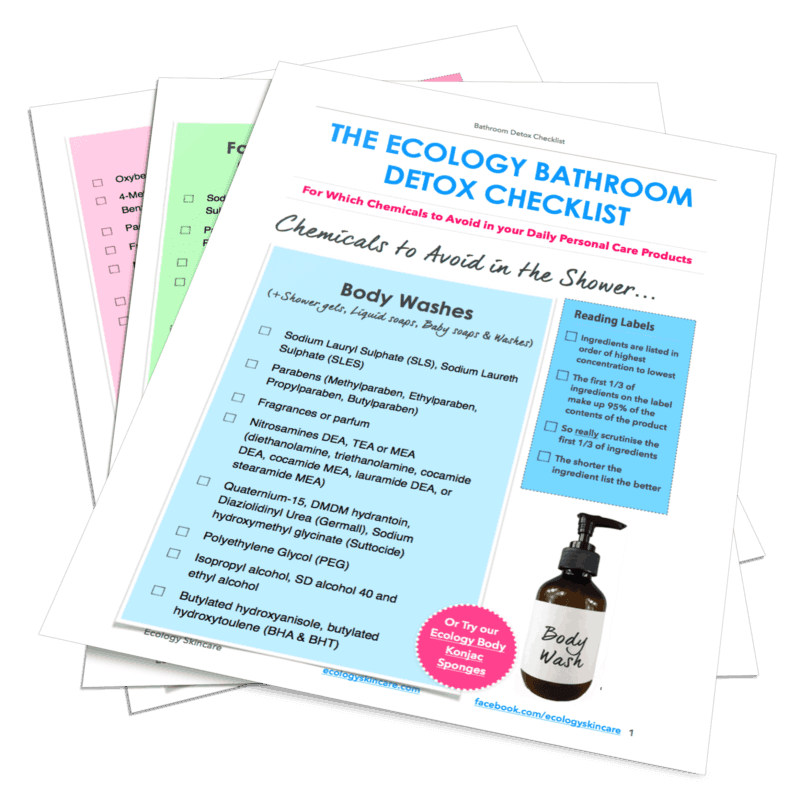
You'll be able to pick up a product and easily see if it contains ingredients best avoided
Enter your details below to join the VIP mailing list and get your checklist...
[contact-form-7]Your personal information is 100% secure and will never be shared. We collect, use and process your data according to our Privacy Policy
Links
- The Environmental Working Group
- The Chemical Maze
- Ecology Konjac Sponges
- David Suzuki’s Dirty Dozen Ingredients to Avoid
- The Ecology Bathroom Detox Checklist
- Ecology Skincare Blog [VIDEO]: How to interpret labels and choose better Personal Care Products
- Nicole Biljsma: Healthy Home, Healthy Family book
- Abode cleaning products
- Crystal’s eBook: Natural Skincare Secrets – use the promo code LOVETPS to get it for free
Transcript of this Podcast:
Crystal: Hey, everyone. Welcome to the Primal Shift, practical approaches to primal living in a modern world. I’m your butter vodka sipping host, Crystal Fieldhouse from Ecology Skincare. I have with me the purple carrot addict Jo Fitton.
Jo: Hey, everyone.
Crystal: In today’s episode, we’re going to be talking low-tox skin care, because as the creator of Ecology Skincare, one of the most common topics I get asked about is which skincare ingredients should we avoid, and how can we choose more natural skincare options.
I don’t know about you, Jo, but for me… it was natural once we get our nutrition dialled in. We’ve cleaned up our diet… we’re looking better, we’re feeling better, we’ve got some more head space… that we then have the room to take a look at the other aspects of our lifestyle that we can clean up.
For me, skincare was a biggie. It might not be that way for all of us.
What was your low tox focus after food, Jo?Jo: Yeah. It’s a big topic, because there’s so much, we don’t realize how many different products we use on our bodies and around the homes, because that’s the other thing. As I said to you earlier, I think that cleaning up the products that were used to clean the home was quite straightforward. It was just a matter of going out and buying more plant based products to clean with.
Jo: It’s different when it comes to thinking about what you’re going to put on your skin. There’s more consideration on that. For me, just like for you, because we have sensitive skin because you know, we’re precious, that was even more tricky. I know we’ll probably talk about this a bit later, but it was a big craze (and I don’t know if it’s still such a big craze), but everyone in the natural Whole Foods community was rubbing coconut oil all over themselves. I just couldn’t do that, it just would end up in a rash if I did that.
Crystal: Me too.
Jo: It was really about finding something that was natural but suitable for sensitive skin, so like a moisturizer was really important, because I am a ginger and white and freckly.
Crystal: The ginger ninja.
Jo: Yeah. All the way probably from Scotland or somewhere like that. I get burnt really easily, so before I switched over to a more natural lifestyle, I was using a lot of commercial sunblock, you know, the real chemical stuff.
Crystal: Yeah.
Jo: I would use that a lot when I went out. That’s loaded with all sorts of nasties.
Crystal: Yeah it is.
Jo: When I wasn’t putting that on, I was putting fake tan on, because I wasn’t so comfortable being such a whitey, so I had to put the fake orange on.
I don’t do that anymore obviously. I cringe sometimes when I think about how much I was putting on my skin.Crystal: It’s funny, this is off the topic, but when I was younger, I used to eat at least one carrot every day for lunch. I sort of had that orange thing going on for me inside out, like my skin took on quite that sort of-
Jo: At least it was natural, a bit of carotene.
Crystal: Exactly. Exactly. I was a lot like you, using a lot of those products that aren’t great and not really realizing the impact that I was having. Once I did start paying attention, I kind of tried to pick up the paleo template and apply it to my skin care and had a lot of problems with it, like yourself. It’s not always the case that natural ingredients are the way to go. They can be just as irritating as the chemical varieties. I had big problems with coconut oil as well. It used to make my skin really red and rashy. I was getting a lot of eczema at the time and I was thinking, “this just seems to be making my skin worse” and it was. Coconut oil is really high in salicylates and I was reacting to that. For people that do have eczema, there is a big correlation with a sensitivity to salicylates as well.
Jo: Right. Yeah.
Crystal: Coconut oil especially for people with eczema is not a good idea and it can be fairly comedogenic as well. It’s not great for people with acne, either.
Jo: What does that word mean, Crystal?
Crystal: Comedogenic is acne causing.
Jo: Okay, yeah.
Crystal: You might see that reference thrown around quite a bit, particularly with oil-free moisturisers.
Jo: I learned a word today, I’m happy now.
Crystal: Yeah. Going natural’s not always a straightforward process.
Jo: Yeah. I had the same issue with deodorants. It’s been the bane of my existence to find a decent natural deodorant.
Crystal: Is it the baking soda that irritates you?
Jo: Yeah. It’s just, I think I showed you once, I try not to show too many people because it’s a bit horrifying, but I’d end up with these big rashes under my arms and my arm pits, which is so sore, and it’s really bad obviously in summer when you’re plying on the natural deodorant and because it gets hot, it only gets worse. It’s really important I think with deodorant to find a natural one that works, because I think we’ve got lots of glands under there, don’t we?
Crystal: Mm-hmm (affirmative).
Jo: The commercial deodorant that’s got all the chemicals and aluminum and that sort of stuff, it’s going straight into the lymph system isn’t it?
Crystal: Yeah, exactly. The way that the deodorants with aluminum in them work is they essentially block those pores that are producing sweat, which is, that’s not great. You’ve really got to support your body’s natural functioning, not try and override it. We should actually have a natural smell. That sort of BO smell is not great. Of course, you don’t want to smell like BO, but we should have just that natural smell.
Jo: Yeah, that pleasant not offensive smell. A lot of people have commented that when they switch over to a more healthy lifestyle that they don’t sweat as much, because they’re not trying to get rid of so many toxins in their body, so once they’ve gone through that detox process, they don’t have as much stinky BO. I tend to be okay, but because I’m quite active, I’m not necessarily exercising a lot, I move around a lot, I walk a lot during the day. I just find that some natural deodorants, it’s a catch-22, they might not irritate me because they don’t have baking soda, but they’re not very protecting, especially when I’m going to work, so I have to freshen up during the day to compensate for it. It’s tricky.
Crystal: Do you find that you rotate your deodorants a bit?
Jo: There’s a couple there that I alternate between. I found a couple of brands, one brand in particular, which obviously I won’t mention because I’m not going to promote anything, but it’s a natural one that doesn’t have baking soda. I think it’s got arrowroot, and I think the arrowroot is a good substitute-
Crystal: Yeah, it is a good substitute-
Jo: I think it’s an active ingredient.
Crystal: Absolutely. The other thing as well, when we clean up our diet, in some ways maybe eating more meat and in other ways maybe have a bit of gut health so are able to absorb nutrients more easily, but when we have more zinc in the system, zinc is one of those minerals that does many, many things. When we are sufficient with our zinc levels, we’re not sweating with that yucky smelling sweat as much, which is really interesting. Yeah, we just don’t have that sort of stinkiness about us so much.
Jo: If there’s someone in the office who’s a bit pongy, give them some zinc.
Crystal: Some oysters.
Jo: Yes.
Crystal: They might get the wrong impression though.
Jo: Yeah, so not oysters, maybe some pumpkin seeds or something, or just slip them a supplement.
Crystal: If you’re sort of thinking, well, there are two ends to the spectrum. You might be the kind of person who’s already moved towards the likes of the coconut oil or down to that more natural end of the spectrum, and we’ll talk about why coconut oil might not be so great for skin from just a physiological point of view. Or you might be one of those people that’s now thinking, well, crap, I’m using all the skin care that’s commercial based or is made mass produced essentially. The Environmental Working Group is a fantastic website, EWG, fantastic website to look at if you’re wanting to research the chemicals or ingredients in your skin care. The same with the Chemical Maze, they’ve actually got an app that is available definitely on iPhones, I’m not too sure about Android, so you can look up all the different ingredients. We’ll put these resources in the show notes for you guys.
Crystal: The Environmental Working Group did a survey, and what they found was on average, we women use 12 different products a day containing over 168 different ingredients, which is huge.
Jo: Wow, that’s massive.
Crystal: It could be effectively quoties, quoty fingers, “feeding our skin over 100 different chemicals before we even have breakfast”
Jo: What an onslaught on the body that is.
Crystal: I know. Your liver’s got to, what does get absorbed, because obviously not, there are stats floating around the internet that say something like 50 or 70% of what we put on our skin gets absorbed, or it takes six seconds for things to reach the bloodstream. All those sort of, for want of a better word, scare tactics, you’ve got to take all of that with a grain of salt.
Crystal: What we put on our skin, not all of it gets absorbed into the body. It does depend on the area of skin you’re putting it on, like some area of the skin like our eyelids and our face are a lot thinner than our feet, so we’re going to absorb more than other areas. It depends on whether the skin’s wet or dry, it will absorb more if it’s wet.
Crystal: The size of the molecule in the product itself, if the molecules are too big, they’re just not going to get into the body, there’s no way. Something like collagen for example, you see it in antiaging moisturizers, collagen is great, and we know that when we have more collagen in our skin, then we’re less likely to have wrinkles, but such a big molecule, there’s no way that it’s actually going to get absorbed across the layer of skin. There’s so many different factors that go into whether or not things get absorbed.
Crystal: What does make it into our bloodstream, there’s research that falls down on both sides. We don’t really know what the long-term or the cumulative effects of all the chemical exposure really is. We can certainly make calculated guesses and make sure that we’re erring on the side of caution.
Crystal: For me, it was a big case of reducing the number of products that I’m using all up, and there’s way you can do that. For example on the Ecology Skincare website, we have konjac sponges, that way you can delete a cleanser, you can just use water and a konjac sponge to cleanse with instead of another product.
Jo: Yeah, and they’re great.
Crystal: They are great. Yeah. Using an extra product to remove makeup, you could use a microfiber cloth that removes makeup instead, and that way you’re getting rid of a product as well. Definitely you can go with less products.
Crystal: You can also look at those products and look for products that have got less ingredients in them, that way you’re getting less exposure as well to different chemicals, and using them less often. Once again, when your diet is better and your skin and your body are functioning in a more natural way I suppose, a more functional way, I don’t need to wash my hair as often as what I used to. It doesn’t get as oily, it doesn’t get as greasy. In that way, I’m using my shampoo and conditioner less than what I was previously.
Jo: Yeah. I think people need to really be wary of the marketing messages out there, because women in particular, and men too now, but women in particular get told constantly through the media that they have to have a special cream for this and that and the anti ageing and the eye cream and the lip serum. They get told they need all these really small, expensive products to do separate things when like you said, if you just used, looked after your body and fed it from the inside out and sort of simplified the regime, then it’s just as effective.
The Dirty Dozen Chemicals that are Best Avoided in our Personal Care Products
Crystal: Yeah, exactly. Let’s take a look at all those products that we have and touch on the dirty dozen chemicals that are best to avoid in our personal care products and why, and we’ll also give some tips on what to look out for and ways to make some better skincare choices.
Jo: Crystal, you mentioned before that potentially we can put up to 168 different chemicals on our skin. Why is the dirty dozen only 12?
Crystal: Yeah. This was put together by the David Suzuki Foundation, and we will put the link in the show notes as well. They’ve put together this list of ingredients, they based it on pulled data from really respected scientific and advocacy organizations, and they conducted a survey around 6,000 people, Canada I think it was based in, who were using 12,000 personal care products, and they narrowed it down to 12. Yes, there’s a lot of different ingredients in skincare products, but they’ve pretty much put it on a sliding scale, so this is the worst of the worst. These are the ingredients that tend to pop up in so many of our personal care products.
Jo: They’re the most common ones.
Crystal: The most common ones, yeah, yeah. What they found was in all those 6,000 people, 12,000 personal care products is that more than half of the products that we use contained multiple numbers of these dirty dozen ingredients. 80% of the products had at least one of these dirty dozen ingredients in them.
Jo: Okay.
Crystal: Those dirty dozen ingredients, I’ll run through them, I won’t go into heaps of detail with them, because we will put links in the show notes for you to pick up some free downloads.
Jo: These are the main ones when someone’s looking at a product in the super market or in a chemist or whatever that they turn it over and they look at the ingredients, they should be looking out for these ones in particular.
#1 Sodium Lauryl Sulphate
Crystal: These ones in particular, absolutely. Your first one is something that we’re all probably pretty familiar with, this is sodium lauryl sulfate, or even sodium laureth sulfate as well. It’s a detergent or a foaming agent most commonly found in shampoos, your cleaners, body washes and things like that. For this one, it’s really irritating to the skin. It strips away our skin’s natural oils, which for those of us who have sensitive skin or are prone to really dry skin, it just makes things worse.
Jo: Yeah. I think the foaming action in shampoo is just really there to make people feel like their hair is being washed, isn’t it? You don’t actually need that foaming action for the hair to be cleansed.
Crystal: Yeah. Having something that does foam, it will strip out extra things that you don’t necessarily want to get out of your body like those oils on your skin, and oils on your hair as well, because that’s what-
Jo: The natural oils.
Crystal: Yeah, exactly. You’re right. The foaming side of things, it does make you feel like it is doing something, it’s getting it cleaner. What people will often find is when they move over to those more natural options with the more milder detergents, so look out for particular your yucca extract or polyglucosides like decyl glucoside, those are detergents that are milder and they don’t foam as much. It is something that you’ll need to get used to when you do make that change over. You might be feeling like this product isn’t working to cleanse your hair properly, but it is. It’s doing as much as it needs to, we don’t need to overdo it.
Jo: Yeah. Just getting used to it.
Crystal: Yeah.
Jo: What’s the next one?
#2 Parabens
Crystal: The next one is parabens, and this is something that we’re probably all familiar with as well, so you might see methylparaben or polyparaben in the list of ingredients. Often, they come together, you often don’t see just one of those parabens, you might see two or three or four.
Jo: They come in gangs.
Crystal: They come in gangs, exactly. They’re preservatives. You find them in moisturizers, toothpaste, shampoo, even makeup. They’re in between 75 and 90% of your mass produced personal care products.
Crystal: The reason why your parabens aren’t so great for us is they’re definitely associated with skin irritation, and also endocrine disruption. This is one that’s quite loaded. Parabens are something that are held up as the biggest, nastiest things in your skincare products. The reality is the research does fall down on both sides. On the one side that they’ve only got fairly weak endocrine disruption and no link to breast cancer, because this is breast cancer that pops up as, oh my god. On the other hand, there’s research that suggests that they do definitely have an effect on our hormonal system and do disrupt, they do mimic estrogen activity.
Crystal: The reality is probably somewhere in the middle. It will depend on dose, it will depend on how much you expose yourself to.
Jo: If they’re in so many different products and we’re constantly putting it on our skins, most people using it are bound to get some sort of dose of it.
Crystal: Yeah, absolutely. It’s definitely not something I want to have on my skin or in my body. I definitely err on the side of, that’s not something I’d like to have in my products.
Jo: No.
#3 Fragrance or Parfum
Crystal: The third one is fragrance or parfum, and this is huge.
Jo: That’s like flavoring in food, which is normally just, when they say flavoring, it’s MSG isn’t it? The same sort of thing.
Crystal: Yeah, exactly. The words fragrance and parfum, are a catchall for thousands of different products. It’s a way that skin care companies can maintain a proprietary or a secrecy around their ingredients, so they sort of put, they’re allowed to put it under the term fragrance, and they don’t need to disclose what it is so they can protect their formula in that case. What it doesn’t do is protect us, because the chemicals that come under that net contain all sorts of crazy stuff that can cause skin irritation, that can sensitize the skin, cause allergies, skin reactions. Essentially, your fragrances are among the top five allergens in the world because they do contain, they do cover so many different ingredients.
Jo: And cause lots of migraines as well. I just know that if I am exposed to too much perfume, like someone in an office or something like that, or if anyone’s walked through a department store through the fragrance section, you walk out with a migraine, it’s just terrible. That’s obviously all the chemicals.
Crystal: Yeah, yeah, exactly. In a previous role of mine, I used to be a medical rep and call on GPs and specialists, and there would be specialists particularly on the allergy end of the spectrum that as a medical rep, they would state very explicitly, “Do not wear any perfumes or anything when you’re coming to call on this specialist, because we have people in our waiting room that are so sensitive to fragrances that we’d like this to be an area where they’re not going to be affected.” It’s like a little haven for them.
Jo: Yeah. I remember when I was probably about 19-20 and my cousin had a perfume that I liked the smell of, and so she let me spray some on my chest. I can’t even remember what it was called. It was about 15 minutes, my whole neck and chest was a big red rash. It was just horrendous. I had to wash it off and try and calm the skin down. I’ve never had that with another, like, I don’t use fragrance anymore. It was just horrible, and that particular one that my skin just hated.
Crystal: Yeah. It’s interesting as well. There’s a lot of products that say they’re unscented, and there are so many chemicals as well that need to go into a product to disguise the scent or the aroma of other ingredients. Even those products that say they’re unscented might have the words fragrance or parfum somewhere in the ingredient list to try and cover other aromas in the product as well. Definitely read the ingredients.
Crystal: As an alternative, essential oils or plant extracts are a better alternative, but definitely there’s still ones to watch out for. You don’t want to have a product that’s overloaded with essential oils, because that can cause problems as well.
Jo: Yes, absolutely. We’re up to number four.
#4 DEA, MEA, TEA
Crystal: Number four is your DEA, TEA, and MEA. This is a group of chemicals that are foaming agents, and they help to adjust the pH of a product. But they’re also skin and lung and eye irritants, and also linked to hormone disruption. They’re often found in your shampoos and your moisturisers as well. Interesting with the moisturisers, but that’s to help give sort of a creamy feel to the product.
Jo: People have washed their hair and they get shampoo in their eyes and it stings, is that because of that stuff normally?
Crystal: Could be. Yeah, it could be that, it could be the sodium lauryl sulfate, it could be the preservatives, it could be anything. Shampoos and conditions are hard products to switch out. It’s possible, though.
#5 Phthalates
Crystal: The fifth one is phthalates. This is not something that you’ll ever actually see on a skincare label, because they’re one of those that do hide in that term fragrance, under that umbrella term. They are also more in a way a contaminant as well. Companies might not necessarily willingly put them in there.
Jo: Right, that’s a bit sneaky.
Crystal: Yeah, it is. It comes back to just try and avoid products that have the words fragrance or parfum on them. Your phthalates in particular, they have been found to be carcinogenic, and they’re also ones that, they can mimic estrogen activity as well, so they can disrupt hormones. They’ve been linked to birth defects and infertility as well. Again, the evidence comes down on both sides for all of these.
Jo: Do they tend to be in plastics as well?
Crystal: Yes.
Jo: Is it the phthalate that are in a lot of plastic products?
#6 Formaldehyde Releasing Preservatives
Crystal: Yeah. Number six is your formaldehyde-releasing preservatives, widely used in haircare products, moisturisers, baby products, makeup, that kind of thing. We’ll put a list of what those ingredients are, what those formaldehyde-releasing preservatives actually are, I’ll put the list in the show notes, because there’s a lot of big long names that I’m just not going to embarrass myself trying to pronounce.
Jo: And I’m certainly not either.
Crystal: Yeah. Like the other preservatives, they can cause skin irritation and have suspected effects on the liver and the immune system and the nervous system as well.
Jo: Just the word formaldehyde-releasing doesn’t sound very appealing to me.
Crystal: No, exactly. Certainly in larger doses, it has definitely been found to be carcinogenic. In the building industry is where the most research has been done into formaldehyde products and building products.
Jo: Yes. I think formaldehyde is in cigarettes, too.
Crystal: Yeah, you’re right. I remember seeing posters on the wall that can call out the different ingredients in cigarettes.
Jo: Nice. Yes. Number seven.
#7 Mineral Oils
Crystal: Number seven is your mineral oils, your petroleum or petrolatum depending on where you come from. You’ll often find these in moisturisers and eczema products, lip gloss and lip balm, because they help to give a shine to products.
Jo: It’s like, what’s that old product that used to rub on baby’s bottoms? Petroleum jelly.
Crystal: Petroleum jelly?
Jo: Yeah, you can still buy that. It’s horrendous.
Crystal: Yeah. I’m pretty sure you can still get Vaseline as well.
Jo: It actually smells like petrol.
Crystal: Yuck. The reason why they’ve put them on baby’s bums and that kind of thing is that they do help to protect the skin.
Jo: It’s like a barrier.
Crystal: Yeah, yeah. They do form a barrier, but because they do form a barrier, they can interfere with our skin’s natural functioning. The better option over, I’ll say this as well, you can also find them in, it’s a really common lip balm product, a paw paw one, I just can’t remember the name off the top of my head, the one with the red-
Jo: The one with the red tube. Yes.
Crystal: I know. They are protective for skin, but because they essentially form that suffocating barrier over skin, the better alternative is to still protect our skin, but use products that are more likely to support our skin’s natural function like your grass-fed tallow, your lanolin, your beeswax and things like that that will help form a sort of natural barrier but still not suffocate your skin.
Jo: Yeah.
#8 PEG
Crystal: Yeah, that’s number seven. Number eight is your polyethylene glycol or PEG, P-E-G. It’s a thickener, it’s a softener, it helps to draw moisture or keep moisture in the skin as well. Again, it can interfere with the skin’s barrier function because of that. PEG has been found to increase the absorption of the other ingredients in a product, so if it’s in a product that’s got a lot of these other dirty dozen in it, it can help to facilitate the absorption of these other ingredients through your skin’s barrier as well, so that’s not something that you want to happen.
Jo: It’s enhancing the absorption of those.
#9 Triclosan
Crystal: Yeah, exactly. Number nine is your triclosan. It’s an antimicrobial that’s found in your antibacterial washes, hand sanitizers, some of your toothpastes. Again, it can be really irritating to skin. It’s another one that’s really easily absorbed, and is suspected to interfere with hormonal functioning.
Jo: Would people actually see that on the label, that term?
Crystal: Yes. Definitely.
Jo: It would be in most commercial products?
Crystal: I think there’s been a movement to try and get it out of products and reduce the use, because people are becoming more aware that just their blanket carpet bomb sanitize antibacterial stuff is not always the best way to go. I think you’ll start to see it less and less in products.
#10 Coal Tar and Coal Tar Dyes
Jo: Yeah, okay. We have number 10.
Crystal: Your coal tar and coal tar dyes, and again, I’ll put the numbers that relate to those particular dyes in the show notes, but essentially that’s colorants in hair dye.
#11 Siloxanes and Silicones
Crystal: After your coal tar and coal tar dyes, number 11 is your siloxanes or silicones. These are most often in your haircare products as well, because they give your hair a nice shine that sort of softens and smooths out-
Jo: And it’s a bit of a sealing as well, isn’t it? Is it the same silicone that is used in some baking products?
Crystal: I actually don’t know the answer to that. I don’t know, we’ll have to look it up.
Jo: Yeah, that’s interesting. I’ve always wondered whether those silicon baking products are safe or not.
#12 BHA’s and BHT’s
Crystal: I mean, given the name, I’m sure there would be a relationship. Number 12 is your BHAs and BHTs. These are preservatives that are found in moisturizers, shaving products and makeup. As I said before we launched into the dirty dozen, I will put in the show notes some free downloads for you guys, because something that I found when I was looking up these ingredients was there was no resource that had, for example, it listed by personal care products, so you couldn’t just necessarily pick up your shampoo and go, “Okay, which ingredients do I not want to see on the label of my shampoo?” What I did was I put together a resource, it’s called the Ecology Bathroom Detox Checklist, and it’s broken down by product so that you can do exactly that. You can pick up your moisturizer or your shampoo and go, right, what should I not see on this label. I’ve also got in there some suggestions for more natural alternatives as well.
Jo: That’s great.
Crystal: Yeah. To pick that one up, just go to EcologySkincare.com/BathroomDetox. ecologyskincare.com/bathroomdetox.
Jo: Great. How do we change, then? There’s obviously so many products that people probably use that have these in them. Do you recommend a slow transition?
Crystal: Mm-hmm (affirmative). Yeah. For a few reasons. I mean, one, particularly if you do have really sensitive skin, you’ve got to change things out one at a time to give you a chance to work out what might be causing any skin irritation. If you change over everything all at once and your skin breaks out or flares up, you’ve got no idea which one of those products might be causing that. Of course the other reason is the cost, the hit to your wallet.
Jo: As we mentioned earlier too, there’s a lot of natural products that can be just as irritating, if not more irritating to the skin, so it’s really just unfortunately a bit of trial and error to work that out.
Crystal: Exactly. There’s often a price differential as well, between your cheapy supermarket or pharmacy type products and your more natural products, which you can also find in pharmacies, but you might also find them in health food shops, online stores as well. There’s going to be a difference in price, because if you’re using higher quality ingredients, then it’s going to cost the manufacturer more. It’s going to cost you more as well.
Jo: As you said earlier, if people are simplifying the amount of skincare products that they’re using, so going from say 10 different products down to three or something like that, then obviously they’re not going to be spending as much money on different products, so they can maybe invest that into a handful of really high quality ones.
How to read the labels
Crystal: Yeah, yeah. Absolutely. I guess to help me sort of wade through the minefield, because you go, okay, I need to read my labels, everyone says read the labels, that’s cool, but what am I looking at? What do I look for? How do I interpret the labels as such? Definitely, look at the labels the way you’d look at food. You want to go for products that do have a shorter ingredient list, that have ingredients that you recognize so you can visualize growing in nature or you just know what they are. When we look at a food product, we don’t want to see the numbers. We want to see names, not numbers with a lot of these things.
Crystal: In terms of reading the labels, it’s also about sort of that greater research that you can do around the company and their ethics and their philosophies as well. If you know what the ethics and philosophies are of the companies that produce those products and have more knowledge around that, then you kind of know what to expect from the product.
Crystal: If you know that a particular company uses 100% natural ingredients and you’ve got that sort of starting place, you go, okay, I’ll check out this range of ingredients and I’ll have an assumption that they’re more likely to be on the natural range, which is not saying just assume that they will be, it’s saying that’s a good place to start when you’re starting to investigate different skincare products.
Jo: Yeah. I’ve noticed too that there’s a few products like deodorants that don’t actually have the ingredients on the product. You turn over the back, and there’s nothing there. I’m like, “Hmm, that’s a bit dodgy.” People can go online if they really want to find out, but I think if a company’s not willing to put their product list on their product, then they probably shouldn’t.
Crystal: I would be surprised at seeing that on a deodorant but I definitely will take a look at it. Legally, it should be on the product in some way, shape or form, whether it’s on the outer packaging, the inner packaging, or just on the literature that might come with the product. It has to be somewhere.
Jo: The consumer has to be able to access it.
Crystal: They have to be able to access it. Where that’s not the case is if it’s a TGA registered product. You might not see all the ingredients on sunscreen for example.
Jo: Right.
Crystal: If the deodorant you were looking at was TGA registered, if it had some sort of therapeutic action, then-
Jo: So it was exempt from that.
Crystal: It’s exempt. Yeah, exactly. That’s definitely something to look out for. You can email the company directly, and they should disclose that information to you.
Jo: Yeah. All right.
Crystal: They should. Yeah. Even when you are looking at the ingredients on the label, a label that purports to be all natural products and that kind of thing, it is still important to definitely look at it through the lens of assessing the ingredients. There’s a term called green washing in the industry. The ingredients or the product can appear to be more natural than it really is by, and the ingredient list might say for example sodium lauryl sulfate and in brackets say derived from coconut oil for example. They make that by adding sulfuric acid to coconut oil, and one of the byproducts is sodium lauryl sulfate. The end result, the ingredient itself, that’s still not great for us. Some would argue that adding sulfuric acid to coconut oil is not that great either, but they can sort of put that green halo on it by saying derived from coconut oil.
Jo: The end result is still harmful.
Crystal: Yeah. The end result is still a chemical product that’s going to irritate your skin, strip your skin’s natural oils and potentially cause a few issues for you. Definitely go for a shorter ingredient list. Look for natural ingredients with names that you can recognize and even visualize growing in nature. You will find that some labels will have names that you recognize, but also some chemical names that you don’t recognize.
Crystal: Don’t get freaked out by that, it’s just, they call it the INCI way of labeling ingredients. That’s something that crosses barriers in terms of countries and in terms of different common names for different ingredients. You might see the chemical name in bold or in brackets. When I say chemical name, it’s the botanical name. For example, you might see, I’m going to totally embarrass myself with this pronunciation, Simmondsia chinensis, and then in brackets, Jojoba oil, or you might see the first term in brackets and then have Jojoba oil not in brackets. That is what it is. Don’t get too freaked out by the big, big names, especially if they’ve got the more common names in the mix as well.
Crystal: The last thing I would say is definitely look more closely at the top third of the ingredients on the ingredient list. As with food, the skincare ingredients, they’re listed in order of highest to lowest in terms of quantity. With Nicole Bijlsma, she’s written a fantastic book called Healthy Home Healthy Family, and there’s so much good information around products in the home, skincare products, water purity, all sorts of environmental toxins. What she says is that the first third of the ingredients on their label account for 95% of the contents of the product.
Jo: Wow.
Crystal: Yeah. The second third of the ingredients represent 5 to 8%, and then the last third accounts for 1 to 3%. If the first third of ingredients on that label accounts for 95% of the ingredients in the product, definitely look at that third way more closely than the rest.
Jo: I think Nicole has her own cleaning product line as well.
Crystal: She does, Abode.
Jo: Yeah.
Crystal: It’s a good line.
Jo: Yeah, I’ve used some of that stuff, it’s good.
Crystal: Yeah. There’s a few good tips there for you guys. Definitely start, download that bathroom detox checklist, ecologyskincare.com/bathroomdetox. What you were saying before Jo with the how do we go about this, do we do it all at once, do we do it one at a time? Just definitely take it easy. Choose your level of comfort with your chemical exposure. It can be really expensive to throw everything out all at once.
Jo: Phase things out.
Crystal: Phase things out. Just make the determination that you’ll better choices the next time you go to buy that product that’s running out. Go easy on yourself. Over time when you’re taking this approach, you will be exposing yourself to less chemicals, and especially as you said before, if you are using less products or using them loss often.
Jo: Yeah. You know, in the world that we live in, we cannot prevent exposure to products in the environment. We can only do what we can do with our personal lives, like with our skincare products and our cleaning products. The reality is, is that on a daily basis, we’re going to receive an onslaught of chemicals in the environment. It’s really just about trying to minimize that, but we can’t live in a bubble pretty much.
Crystal: Yeah. Yeah, exactly.
Jo: Just do what you can.
Crystal: Yeah. There’s always the old mixing oatmeal in with water and using that-
Jo: A bit of sea salt and honey, yum.
Crystal: Exactly. Well, honey is actually a great cleanser for the face. I’m pretty sure I’ve actually seen it used instead of shampoo as well, but I just haven’t been game to do that, because I just don’t want to deal with what happens if I can’t get all the honey out of my hair.
Jo: Yeah. You don’t want to be stuck around bees if that happens.
Crystal: Exactly. Exactly. Guys, I hope that’s answered some of your questions or underlying concerns around chemicals and skincare and gives you an idea of what to do look for when you’re starting to make those lower tox choices with your personal care products. I do have a book that I’ve written, and it’s called Natural Skincare Secrets for Women with Sensitive Skin. There’s a whole chapter on these dirty dozen chemicals.
Crystal: I’ve pulled together information from that David Suzuki summary of all those dirty dozen chemicals, and also pulled in information as well from the Chemical Maze, that Chemical Maze app that we talked about earlier, from SevenCanaries, and also from Nicole Bijlsma’s book as well, pulled it all together into a table, so 12 tables of all of those ingredients, and also some great information around that as well on how to choose your skincare products.
Crystal: I’ve organized a promo code for you guys so you can pick up the book free, it’s worth $7. On the ecologyskincare.com website, when you check out your cart … Put the book in your cart to start with, Natural Skincare Secrets for Women with Sensitive Skin, and use the promo code LOVETPS, all one word, and you’ll get the book for free.
Jo: Yay. What a great deal, and it is a fantastic book. Go get it.
Crystal: Yeah. Cool. Thank you so much for joining us today. Thank you, Jo.
Jo: Thanks, Crystal you brainiac with all this chemical stuff. I’ve learned some new words today.
Crystal: We will put all the links and everything in the show notes for you guys at ThePrimalShift.com.au, and yeah, please come and catch up with us on Facebook and Instagram at The Primal Shift, and we will endeavor to answer any questions. Leave us your comments, tell us what you use. Tell us, if you found any particular skincare ingredients that you love that are natural, they’re working for us, let us know over social media, because we’re always on the lookout for some good skincare products.
Jo: Yeah. Thanks everyone.
Crystal: Thank you.
Jo: Bye.
Crystal: See you.

JOIN THE VIP CLUB & DOWNLOAD YOUR FREE
BATHROOM DETOX CHECKLIST

You'll be able to pick up a product and easily see if it contains ingredients best avoided
Enter your details below to join the VIP mailing list and get your checklist...
[contact-form-7]Your personal information is 100% secure and will never be shared. We collect, use and process your data according to our Privacy Policy
The post The Dirty Dozen Chemicals to Avoid in your Skincare appeared first on Ecology Skincare.
15 May 2018, 1:46 am - 41 minutes 59 secondsMBB#11: How a Healthy Glow is linked to Healthy Poo with Lynda Griparic
On this episode of Mind Body Beauty, we’re talking how and why our poo and bowel habits can affect our skin and our healthy glow with the lovely tea drinking yogini, Lynda Griparic.
We chat about how constipation can even drive skin issues like acne and rosacea …and also what you can do about it.Lynda Griparic is a qualified Naturopath, Nutritionist, Writer and Speaker with over 14 years of experience in the health industry. Lynda specialises in constipation, gut health and weight loss. She has extensive experience in running healthy, effective and sustainable bowel care and weight loss programs and has expertise in investigating and treating the underlying causes of weight gain, metabolic problems and gut disturbance.
Lynda has an intense interest in poo and she’s also the creator of the delicious BetterMe Tea (or BeMT …get it? Be empty?!)I chat with Lynda about:
- How she became known as the “poo whisperer”
- Her experience with constipation as a frequent traveller
- Connecting the dots between bad breath, stomach pain, skin breakouts and constipation
- What is the link between gut health, constipation and skin?
- How constipation can lead to leaky gut and gut dysbiosis (alterations in gut flora) as well as inflammation
- Our skin is our immune defence and responds to internal disruptions in gut flora and inflammation
- Recycling hormones and waste products and the effects on the body of reabsorption of these compounds
- What role constipation plays with acne and rosacea, in particular
- Small intestinal bacterial overgrowth (SIBO)
- Why taking antibiotics for acne and rosacea can be problematic
- How often should we be going to the toilet? …and what should our poo look like?
- The problems with taking laxatives
- What can cause constipation? Stress, iron deficiency, parasites, not moving enough, certain medication
- How movement and yoga can help move things along if you’re constipated
- How magnesium can help with constipation and our Ecology Mineral Bath Salts
- What works well for Lynda to help get things moving, what she eats and drinks, her morning routine, breath work, moving, tapping, taking breaks regularly, squatting
- Poophoria tickles my fancy
- Best tips for travelling to avoid constipation
- Lynda’s BetterMe tea, what’s in it and how it works
- Naturopathic consulting with Lynda
- GIVEAWAY: Enter here
JOIN OUR VIP CLUB & DOWNLOAD YOUR FREE PDF

15 Tricks to have a Great Poop Every Time
Bought to you by naturopath Lynda Griparic aka "the poo whisperer"
[contact-form-7] *You will be added to the mailing list of both Ecology Skincare & Lynda Griparic. Your email address will otherwise not be shared and you will not receive spam. We collect, use and process your data according to our Privacy Policy
Enter your details below to join the VIP mailing list and you'll get your free PDF Happy Crap Stool, handcrafted by Birksy the Bearded Builder
Happy Crap Stool, handcrafted by Birksy the Bearded Builder
Links:
- Lynda Griparic Naturopath
- Replenishing Mineral Bath Salts
- Happy Crap Stools (squatty potty): Birksy the Bearded Builder
- GIVEAWAY
The post MBB#11: How a Healthy Glow is linked to Healthy Poo with Lynda Griparic appeared first on Ecology Skincare.
7 February 2017, 8:08 am - 28 minutes 32 secondsMBB#10: WILD FITNESS WITH JADE de VALLE FROM ADVENTURE PERSONAL TRAINING
 Jade de Valle Adventure Personal Training
Jade de Valle Adventure Personal Training
On this episode of Mind Body Beauty, we talk Natural Movement and how we can move naturally for our health, happiness and our skin with the Wild Fitness Adventurer Jade de Valle.
Jade is an exercise scientist and personal trainer who’s broken out of the box and trains her clients in the great outdoors, here on the beautiful Mornington Peninsula.
Using body weight and our natural surroundings as props instead of gym equipment, I’ve found myself climbing trees, hanging off branches and commando crawling up hills when training with Jade and it’s all a lot of fun.Jade is all about connection, curiosity and adventure. And especially connecting our mind with our body and connecting our whole selves with our natural environment.
I chat with Jade about:
- How she came to become a Wild Fitness trainer
- Gyms and aerobics classes are a modern construct, exercise used to be about freedom, play, moving naturally and getting outside
- Play is the best way to learn about yourself, adapt to your environment and connect with yourself, your environment and other people
- Mindfulness and connection
- Protecting natural environments and keeping beautiful places beautiful
- Self care and ‘feeling our feelings’
- The mistakes we can make when we approach exercise
- Speeding things up and bringing our busy, rushing lives into our movement and training
- Not thinking about what we’re doing or being mindful
- Being too focused on the end goal and missing out on the process and journey along the way
- Skipping ahead before going back to the basics of movement – crawling, breathing – regress for progress
- The benefits of training outdoors – we feel calmer and happier
- Life in Japan, flower viewing and outdoor play, socialising and activities
- The benefits of movement for stress relief and for increasing blood flow and nutrients to skin
- How can we get more natural movement into our daily lives?
- The benefits of human contact and touch, self healing
- Healing and hormones with hugs and massage
- What can people expect with Adventure Personal Training?
- Getting your shoes off, contact with the ground, exploring and adventuring, playing games – anything

Links:
The post MBB#10: WILD FITNESS WITH JADE de VALLE FROM ADVENTURE PERSONAL TRAINING appeared first on Ecology Skincare.
1 December 2015, 10:04 pm - 20 minutes 43 secondsMBB#09: Why Saturated Fats are Good For your Skin with Christine Cronau
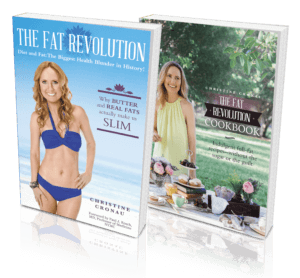 On this episode of Mind Body Beauty, we talk about the benefits of natural fats for your skin with Butter Crusader, Christine Cronau.
On this episode of Mind Body Beauty, we talk about the benefits of natural fats for your skin with Butter Crusader, Christine Cronau.Christine is a nutritionist and best selling author of The Fat Revolution and The Fat Revolution Cookbook, with a catch cry of Bring Back the Fat, Christine has been working hard to dispel the myths around saturated fats.
I’ve invited Christine on to have a chat with us, because natural fats are vital for nourishing our skin from within.
Fat and cholesterol make up a massive proportion of our cell membranes. They strengthen our skin cells against the effects of oxidation and inflammation and a Japanese study found that women who consumed more saturated fat had significantly less wrinkles.
So I don’t want you to miss out on the benefits of natural fats for your skin by fearing fat!
I talk with Christine about:
- Where the fat phobia came from?
- We actually ate loads of fat before the 1900’s
- Our diets changed in the early 1900’s – we started eating less fat and more sugar and vegetable oils
- In 1926 we had the first documented case of a heart attack
- The lack of evidence for saturated fats in the
- By the 1980’s low fat diets were really popular and were supposed to make us slim and protect us from heart disease
- The result is we got fatter and rates of heart disease continued to rise
- What kinds of problems does a low fat diet cause for us?
- We need natural fats for our hormones, good organ function, our mental health – for good serotonin levels, for our general health and our skin
- Our cells membranes are made up of around 50% saturated fats, so saturated fats are necessary for healthy cells
- Vegetable oils and margarines contain damaged fats (trans fats and oxidised omega 6’s) that can damage our cells, including the cells in our skin
- Trans fats accelerate aging and organ damage
- The benefits of natural fats to slow the signs of aging and wrinkles
- The myth of drinking lots of water to hydrate cells
- Cell hydration has got more to do with the strength of your cell membranes
- If we don’t eat enough fat then our cell membranes become weak and don’t retain as much water
- Sugar and carbohydrates have replaced fats in our diets which increases acidity and reduces our ability to regenerate collagen
- What effect can fats have on our skin and skin inflammation?
- Less fat, more sugar and refined carbohydrates have changed our gut bacteria and have lead to an increase in skin issues
- We have to lose the fear of fat and real foods like: Eggs, butter, coconut oil, grass fed fats
- What does Christine typically eat in a day?
- People will often notice the difference in their skin when eating a higher fat diet, “plumping” up and smoothing out fine lines
- Low fat dieters age faster on the inside and the outside
- Christine tries to avoid scrubbing the oils off the surface of her skin
- You need cholesterol in your skin to convert sunlight and produce Vitamin D
- You do not want to have the squeaky clean feeling on your skin
- Christine loves her Ecology Cream!
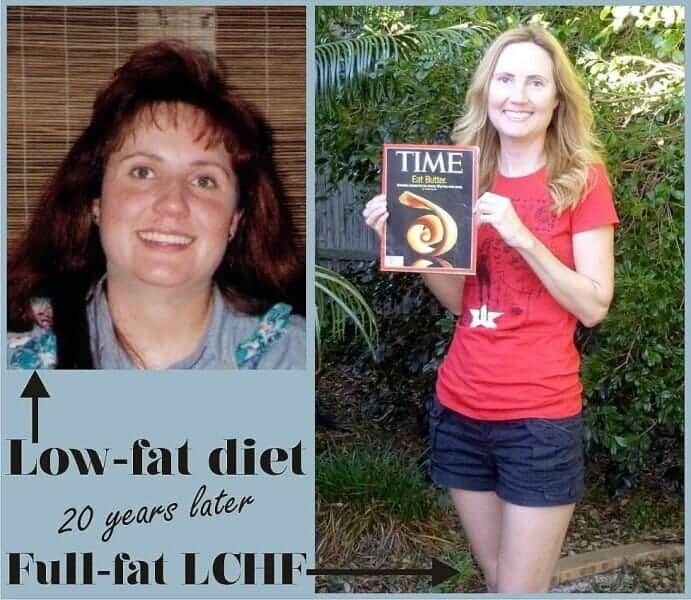
Links:
- Christine Cronau on Facebook
- Chrisitne’s website: christinecronau.com
- The Fat Revolution
- [Video] Low Carb Down Under: Christine on “Why Saturated Fat is Good for Us”
- [Podcast] The Primal Shift: Wrap up from the Changing the Way we Eat Conference, including a chat with Christine on the myths around saturated fats
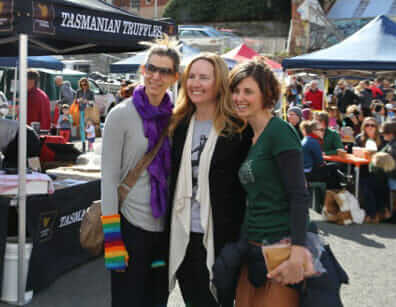 Crystal, Christine & Jo Smith
Crystal, Christine & Jo Smith
The post MBB#09: Why Saturated Fats are Good For your Skin with Christine Cronau appeared first on Ecology Skincare.
12 November 2015, 12:25 am - 27 minutes 29 secondsMBB#8: How your Gut Microbiome can Affect your Skin with Jacqui Kirkland
 Jacqui from Grateful Harvest
Jacqui from Grateful Harvest
Today on the Mind Body Beauty Show, I talk with Jacqui Kirkland from Grateful Harvest about gut health and the incredible inhabitants of our gut.
Jacqui is an artisan crafter and supplier of high quality fermented foods and beverages and she’s passionate about helping people make that connection between gut health and the health of their body and mind.
Our gut health also has a big impact on our skin health!https://youtu.be/Gc29l2DjeQA
I chat with Jacqui about:
- Being only 10% human!
- How do the microbes on our skin and gut get there?
- The interaction between our gut flora and our immune system
- How does our gut flora influence our mood?
- What can we eat to help feed our beneficial bacteria?
- The impact of food, genetics, stress, sleep and good quality water on our microbiome and how these can disrupt gut flora
- Whole foods that are high in fibre, avoiding antibiotics, avoiding heavy metals and chemicals, as well as reducing stress will all help our gut microbiome
- How does out gut microbiome affect our skin health?
- Fermented foods and fermented beverages
- Who are fermented foods not good for?
“Our bugs are there to help us. We’re all in it together, it’s in their interest for us to survive” ~ Jacqui Kirkland
Links:
“Be kind to yourself and be kind to your microbiome” ~ Crystal Fieldhouse
The post MBB#8: How your Gut Microbiome can Affect your Skin with Jacqui Kirkland appeared first on Ecology Skincare.
2 November 2015, 6:44 am - 40 minutes 20 secondsMBB#7: How to be Safe in the Sun with Dr Anastasia Boulais
On this episode of Mind Body Beauty, we talk about the misconceptions around sun exposure and Vitamin D with sun worshipper Dr Anastasia Boulais from the Ancestral Health Society of NZ and Whole 9 South Pacific.
Anastasia is a Russian-born, Australian-trained medical doctor, now living in NZ and working in a busy acute care medical clinic.
She has a keen interest in evolutionary medicine and is a founding member of the AHSNZ with a commitment to education around an ancestral diet and lifestyle. Anastasia also loves to lift heavy things and get out and about exploring NZ on foot and on her mountain bike.I’ve invited Anastasia on today to share her research and her thoughts around the misconceptions on sun exposure and vitamin D …because there’s a growing body of evidence that suggests that our overuse of sunscreen and our habits of staying out of the sun may be doing our health more harm than good.
We chat about:
- The misconceptions around sun exposure and skin cancer
- Risk factors and association vs causation
- The different types of skin cancer: Melanoma vs basal cell and squamous cell carcinomas
- Factors around the type of sun exposure, where, when
- Fear of the sun from TV ad campaigns
- Some sun exposure is protective
- Anastasia disagrees with the campaign message “There’s no such thing as a safe tan,” scientific research shows the opposite to be true
- The different types of sun exposure: chronic vs intermittent (on the weekends for example)
- Intermittent exposure has a role to play in melanoma in the context of the factors
- Slow, chronic, careful sun exposure is protective
- People that work outdoors have a lower incidence of melanoma vs people that work indoors
- The two main types of sunlight UVA (longer wavelength) and UVB (shorter wavelength)
- UVA is for aging, it penetrates deeper into skin, causes redness and a tan that doesn’t last very long. UVA oxidises melanin precursors in skin cells, essentially causing them to go “rusty” and this is how it produces a tan. Oxidation can also cause DNA damage.
- UVB is for burning, it does not penetrate skin as much, it burns faster but builds a longer lasting tan. UVB acts on skin cells to make them produce more melanin by changing DNA structure, potentially one of the drivers for cancer
- Which is more responsible for skin cancer? UVA or UVB
- SPF is a measure of how much UVB it blocks, concern used to be all about UVB exposure
- Research suggests that the majority of damage to cells is really caused by UVA exposure
- What behaviours expose us more to damaging UVA wavelengths of sunlight?
- Going out in the sun in the afternoon rather than midday, using sunbeds, using SPF sunscreens, getting sun exposure through glass windows
- These behaviours skew the ratio of our exposure towards unsafe UVA exposure
- Which ingredients in sunscreen block both UVA and UVB?
- Incidence of melanoma and location in men and women
- UVB is the wavelength that promotes Vitamin D production in skin
- Does Vitamin D supplementation reduce risk of skin cancer?
- Unintended consequences of Vitamin D supplementation
- What are the functions and benefits of Vitamin D in the body?
- Nervous system, immunity, autoimmune disease (multiple sclerosis) and metabolic health – diabetes
- Diet and lifestyle factors that influence our protection from skin cancer and how our bodies utilise Vitamin D
- Need to have enough cholesterol in the system, it’s a precursor to Vitamin D synthesis in the skin
- Antioxidants from fruit and veggies, Vitamin C and Vitamin B3 (nicotinamide) from meat, fish and yeast can improve skin protection from sun exposure
- Sleep also helps to protect skin from sun exposure by increasing melatonin, our main anti-aging antioxidant
- Seasonal changes in Vitamin D production and sun exposure
- AHSNZ Symposium
Links:
- Ancestral Health Society of NZ
- Primal Meded
- Jamie & Anastasia’s Re-Evolutionary Blog
Want to find out which Chemicals to Avoid in your Sunscreen? …As well as some more Natural Alternatives?

JOIN THE VIP CLUB & DOWNLOAD YOUR FREE
BATHROOM DETOX CHECKLIST

You'll be able to pick up a product and easily see if it contains ingredients best avoided
Enter your details below to join the VIP mailing list and get your checklist...
[contact-form-7]Your personal information is 100% secure and will never be shared. We collect, use and process your data according to our Privacy Policy
The post MBB#7: How to be Safe in the Sun with Dr Anastasia Boulais appeared first on Ecology Skincare.
14 October 2015, 10:06 am - 51 minutes 54 secondsMBB#6: How to get your Beauty Sleep with Jamie Scott
What does a good night’s sleep really look like?
On this episode of Mind Body Beauty, we talk about the importance of getting your beauty sleep with Jamie Scott from Synergy Health and the Ancestral Health Society of New Zealand.
Jamie is a nutritionist, sport and exercise scientist and a proud kiwi.
He is the president of the Ancestral Health Society of NZ and the researcher and content developer for Synergy Health. Jamie also loves mountain biking, a good espresso and a good debate!I’ve invited Jamie on today, because I think sleep is one of the most under appreciated and best things we can do for our general health and happiness and also for our skin health.
When we don’t get enough sleep, it’s apparent in the dark circles under our eyes, our skin looks dull and fine lines seem deeper and more pronounced. But it’s not just about vanity, there’s so much more going on under the skin than just the appearances.
If we’re not getting a good night’s sleep it can affect EVERYTHING!!
I chat with Jamie about:
- What happens when we sleep?
- Sleep is probably one of the most active states for our brain and our repair and restorative processes over the 24-hour circadian cycle
- Brain wave patterns during sleep
- Hormones that are released when we sleep, like growth hormone
- Our immune activity steps up during sleep to repair tissues that breakdown over the day (reversing the ‘ageing’ process)
- Our immune system becomes suppressed when we’re sleep deprived and we become more susceptible to colds and flu’s
- The inflammatory aspect of skin issues like acne and scaling skin
- Collagen in skin breaks down during the day and is repaired during sleep
- Collagen repair declines if we don’t sleep enough leading to sagging skin and wrinkles
- Chronic stress contributes to increased cortisol levels and thinning of the skin
- Environmental exposures and inflammatory foods like vegetable oils and sugar can overstimulate the immune system
- Making sure our sleep is well timed with our circadian rhythm and eating whole foods to help balance our
- How much sleep should we be getting?
- The data points towards 7-9 hours sleep, allowing for daylight hours and seasonal adjustments
- US data shows people are typically getting around 6-7 hours sleep – under the lower threshold for what we should be getting
- Light dark cycles and varying our wake-up time with the seasons, we wake up more easily in the summer months
- Repaying sleep debt from summer over the winter months
- It can cause stress on the body when we wake up early in the winter months
- What lifestyle factors can impact our sleep cycles?
- The effect of caffeine on sleep
- The effect of blue light from electronic screen devices (computer screens, smart phones, tablets) on our circadian rhythm, suppressing melatonin
- Melatonin is our main sleep hormone and always loses the arm wrestle to cortisol
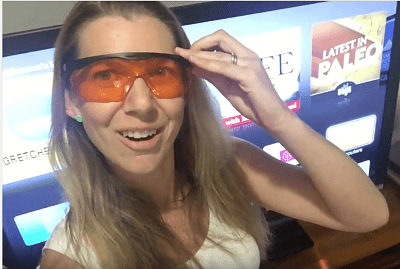 Blue Blocker Glasses
Blue Blocker Glasses
- Feeling tired but wired and restless
- The effect of stress and food allergies or intolerances on our sleep
- The importance of going through the different sleep phases, including deep sleep
- Is there any truth in that old saying that “1 hour sleep before midnight is worth 2 hours after?”
- The first period of sleep is about physical repair, the second period is about psychological repair
- Winding down early enough in the evening to get some deep restorative sleep early or in the middle of the night, “midnight”
- Sleep preparation starts when you first wake-up in the morning
- Getting bright light exposure early in the morning to reset our circadian rhythm and ensuring you have a good protein breakfast
- Reducing caffeine after lunch and continuing blue light exposure through the say, managing stress levels and reducing screen time at night
- Jamie thoughts on wake-up lights, blackout blinds, alarm clocks and electronic devices in the bedroom
- The upcoming Ancestral Health Society Symposium in Queenstown NZ
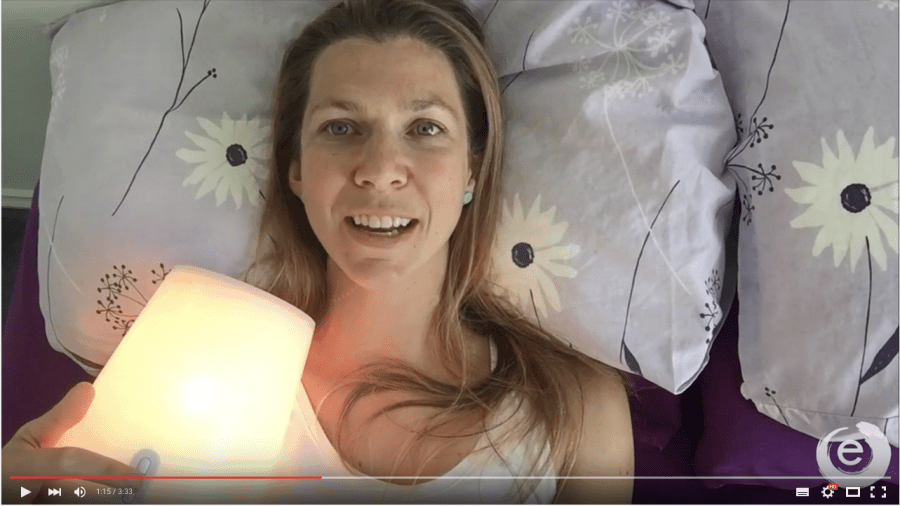 Crystal and her Wake-up Light
Crystal and her Wake-up Light
Links:
- Why Sleep is so Important for Healthy Skin
- The Ancestral Health Society of NZ Symposium
- Jamie’s Blog: Re-Evolutionary
Want to put some of this great info into practice?
DOWNLOAD YOUR FREE
Ecology Beauty Sleep Cheat Sheet
It’s broken into different things you can try in the morning, during the day and at night-time
DOWNLOAD NOW
The post MBB#6: How to get your Beauty Sleep with Jamie Scott appeared first on Ecology Skincare.
5 October 2015, 2:25 am - 24 minutes 46 secondsMBB#5: Food, Mood & Make-up with Vanessa Breden
In this episode of Mind Body Beauty, I talk with Vanessa Breden from Transformations Beyond Beauty about her wellness journey, her thoughts on what Beyond Beautiful really means and her tips for choosing and using make-up (especially for those of us with sensitive skin or skin issues like acne and rosacea)
Vanessa owns a Wellness Studio called Transformations Beyond Beauty. She’s a personal trainer, Pilates instructor, make-up artist, nutritional medicine student and wellness advocate.
Over the years Vanessa has transformed her own health, learning to successfully manage the debilitating symptoms of Hashimotos Thyroiditis and Fibromyalgia without medication.
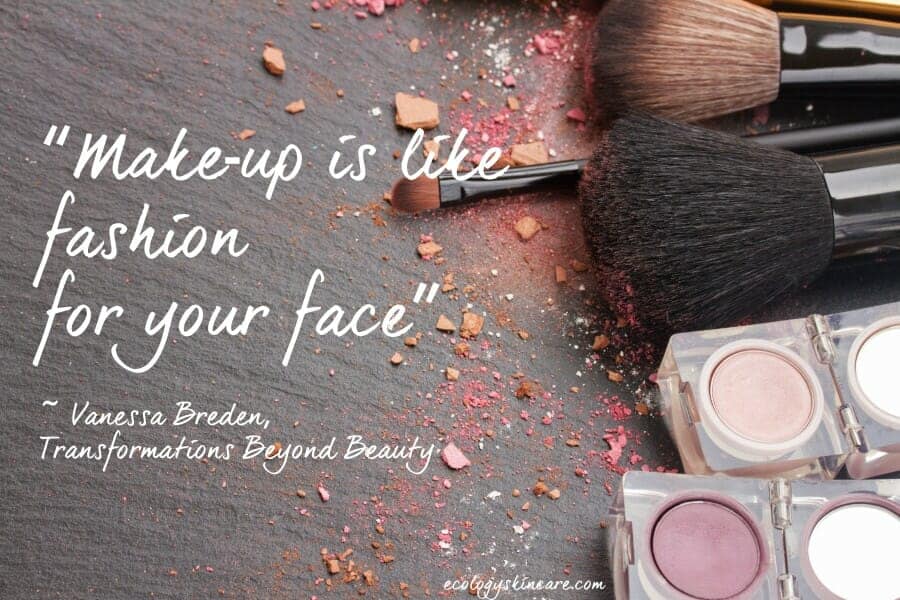
I chat with Vanessa about:
- Vanessa’s experience with fibromyalgia and hashimoto’s thyroiditis and her wellness journey
- The role food and real food can play in autoimmune conditions
- Gluten as a trigger for autoimmune symptoms
- Informed self-care
- Food and Mood coaching in the Transformations Beyond Beauty Wellness Studio
- Encouraging people to pay attention to how they feel after eating and monitoring stress, sleep and water intake
- Beauty is in the eye of the beholder, real beauty is something that comes from within you
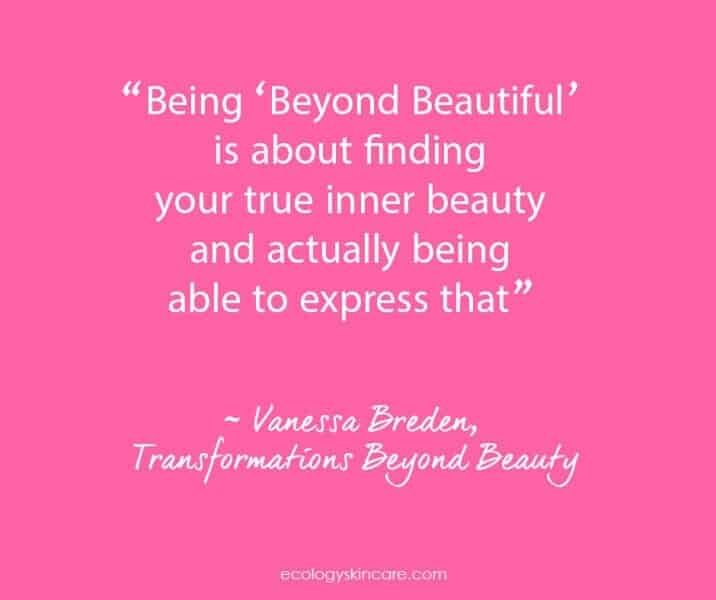
- It’s not about how you look, it’s about how you feel about how you look
- People who own the room are those that feel good about themselves
- Being “Beyond Beautiful” is about finding your true inner beauty and actually being able to express that
- It’s not about creating a new you, it’s about creating a true you
- Vanessa’s thoughts on make-up and how we can judge people who wear make-up or look a certain way
- Make-up is like fashion for your face and how make-up makes you feel
- The mistakes people can make when choosing and applying make-up
- Making sure you choose the right shade of foundation
- Make-up tips for people with sensitive skin or skin issues like acne and rosacea
- Looking out for ingredients in make-up
- Vanessa’s own skincare routine
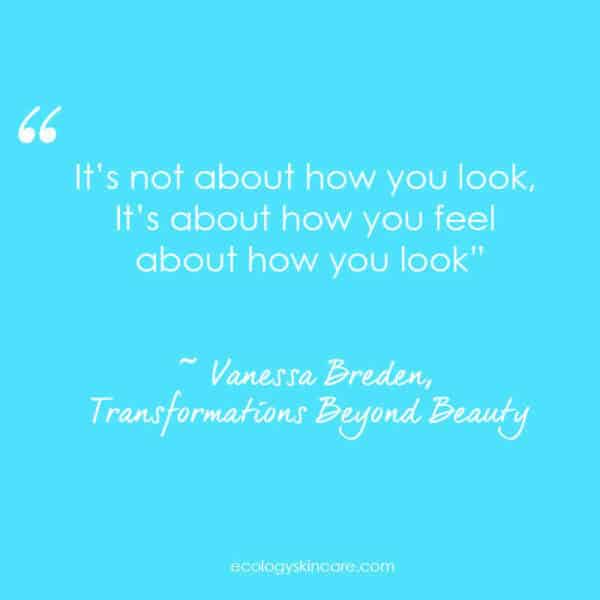
Links:
Want to find out which Chemicals to Avoid in your Make-up and your other Skin Care Products?
Download your FREE
Ecology Bathroom Detox Checklist
It’s broken down by personal care item, so you can quickly and easily pick up a product and know what to look out for in the ingredient list
DOWNLOAD NOW
Let me know what you think!

The post MBB#5: Food, Mood & Make-up with Vanessa Breden appeared first on Ecology Skincare.
16 September 2015, 7:14 am - 52 minutes 55 secondsHow to Make Natural Skincare Simple
This is a transcript and recording from The Primal Shift Podcast where my Primal Shift co-host, Jo and I talk about Natural Skincare, how Ecology Skincare came to be developed in the first place and the Ecology Skincare ethos:
Simple is Good and Less is More
In this episode we each chat about our own skin challenges and how we have simplified our skincare regimes.
Because I’m also a big advocate of Paleo skincare or taking a holistic approach to caring for our skin, we also go deeper than skin deep.
Talking about how we can nourish our skin from within with good food and practices that reduce stress and tension, so we can all round live a little happier in our own skin. The Primal Shift Team: Jo Fitton, Andrew Fieldhouse & Crystal Fieldhouse
The Primal Shift Team: Jo Fitton, Andrew Fieldhouse & Crystal Fieldhouse
We chat about:
- Being gentle with skin and choosing products designed for sensitive skin, plus other diet and lifestyle measures
- Being on the pill and antibiotics to control acne
- Natural salicylates and histamines in foods can be an issue for eczema sufferers
- Coconut oil on skin can be problematic, it’s not for everyone!
- Just because it’s natural doesn’t mean your skin will love it
- Why tallow is good for your skin
- The Ecology Skincare ethos
- The potential problems with an overcomplicated skincare regime
- Natural options for facial cleansing, including the Ecology Facial Konjac Sponge
- Fragrances and essential oils in skincare
- What to look out for on skincare labels and industry green washing
- Less is more
- The impact of stress on our skin
- Visualisation for skin healing
- Sleep and epsom salt foot baths for detoxification
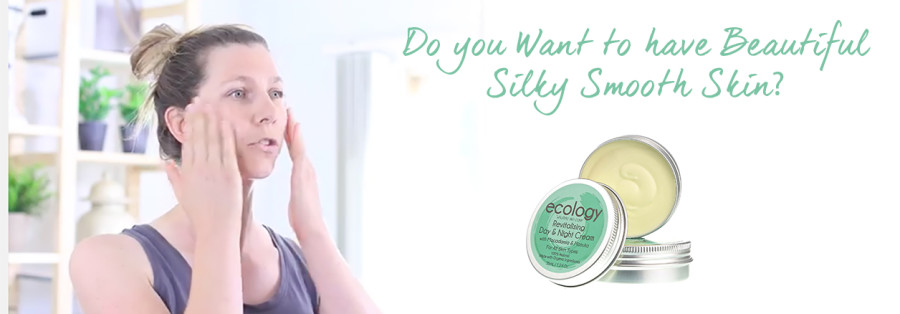
Transcript:
Crystal:
Hi everyone, welcome to the Primal Shift. Practical approaches to Primal Living in a Modern World. I’m your Epsom salt-loving host, Crystal Fieldhouse from Ecology Skincare, and I have with me the salt and pepper calamari fiend, Jo Fitton. Hey there!Jo:
Hi.Crystal:
Now today’s episode is all about natural skin care, a topic that’s close to my heart and of course, very close to my skin. I fully believe that when it comes to skin care, simple is good, and less is more. We’ll have a chat about how we can simplify our topical skin care regimes. We’ll also be going deeper than skin deep, and chatting about how we can take a more holistic approach to caring for our skin by nurturing our skin from within with good food and practices that reduce stress and tension, so we can all around live a little happier in our own skin.Jo:
That sounds good to me. I’ve been looking forward to this episode.Crystal:
Yeah, I know, me too!
Now, Jo, you and I have both had our fair share of skin issues, so what are some of the skin challenges that you have had over the years?Jo:
Well yes, I have had a fair few skin dramas over my lifetime. They started quite young, as I was saying to you earlier, I had a few problems when I was a child. Had a lot of eczema and dermatitis. I remember getting the patches of rash behind the knees and the elbow creases and behind the ears. I’d often get hives and things like that. At the time, my family didn’t really connect it to what I was eating, but obviously there was some sort of reaction to my diet. At the time it was just a standard diet with all the “goodies”. And it was treated topically with hydra-cortisone cream, which is nice if it works, so it went away and it came back, and it went away and it came back, and I remember it itching and being in pain, but just thinking that that was how it was.Also, as I got older, it didn’t really happen when I was a teenager, I seemed to sidestep the whole acne issue as a teenager, but it kicked in when I was in my early 20s. Yeah, so, I got quite bad cystic acne around the chin and jaw line, which is the tell-tale hormonal areas. It was really painful; I remember it as being this big red sore, they looked like big mountains on my face. It wasn’t doing any good for my self-esteem, and I didn’t feel great. It was a hormonal reaction. My diet at the time was pretty bad. I was eating lots of processed foods, and drinking a fair bit of alcohol. I was probably having quite a bit of sugar, so the insulin level was probably not great, either.
I eventually to a GP and was given the usual antibiotic that’s used to treat acne, which worked really really well. I remember at the time being so relieved that the acne was disappearing. But it obviously has had long term effects on my gut health, so now I’m dealing with all sorts of gut issues, which is probably partly a result of that.
I was on that for a few years, and then I moved to a contraceptive pill that was also designed to manage acne as well for women, so especially if it was hormonally driven, so I remember being on that for many, many years. It was really really strong dosage. I think that all those things probably had a bit of a lasting effect on my health now.
At the moment, I don’t really have any issues. I’ve changed my diet; I’m obviously very very cautious about what I put on my skin. I’ve realized that those typical commercially based products for acne are really really harsh. All they did was just irritate my skin more and strip it.
Once I started treating my skin as sensitive, considered problem skin as in acne-based, it was more … maybe I should just treat it as being sensitive skin, and choosing products that were designed for sensitive skin, things started to improve. Obviously, when I changed my diet as well, that made a drastic difference. I cut out all the refined sugars, and processed food and alcohol and things like that. That’s made a huge difference as well.
As I said to you earlier, I occasionally get the odd … I think here or there at different stages of my cycle, but that’s about it. I’m still sensitive all over my body to chemicals, and I will have flareups now and again, related to histamines issues, and stuff like that. That’s probably a good thing to talk about as well. [crosstalk 00:05:12]
Crystal:
You mentioned as well, getting a sort of dermatitis on your hands if you were using a particular detergent.Jo:
Yeah, yeah, so, I just remember having to use gloves quite a bit when I washed the dishes when I was a child, and even throughout my life, because certain detergents, if I use them too much, would start to cause blisters, like little tiny blisters on my hands and my fingers that would become really itchy and would weep. It was just horrible. But they would just clear up … I haven’t had it for so long, I forget about these things that we need to talk about it as we were earlier. Oh yeah, and then I used to get that, and I’d always get this and … And it’s just because it doesn’t happen anymore.Crystal:
Yeah.Jo:
Yeah, it’s amazing how different chemicals and detergents and synthetic products affect our skin.Crystal:
Yeah, and skin issues are so common. I would imagine that for a lot of our listeners, they’re probably identifying with some of what you’re saying, either with themselves, or with family members. When the stats are something like almost half of us … have had acne at some point along the way, and 25 percent of us have had dermatitis, so this affects a lot of people.Jo:
Yeah, and it’s not surprising because, as you know, the skin is pretty much the outward … it shows us what’s happening on the inside. And things have to come out, and they come out through the skin. All those toxins make their way out somehow and show up on our skin.Crystal:
Absolutely, and in that respect, as much as we curse and look at our skin that’s playing up or acting up with breakouts and that kind of thing, it’s actually a boon that we can actually see, in our skin, the signals that are telling us that there’s something going on on the inside that’s not quite right. It’s far better that our skin tells us and we actually notice those signals and do something about it to sort of help and support our body at that point in time, than dropping dead of a heart attack at fifty.Jo:
For sure.Crystal:
And not having any signals whatsoever.Jo:
It’s like our body trying to communicate with us and so we just need to listen.Crystal:
We need to listen. Absolutely.Jo:
So Crystal, you’ve also had quite a few skin issues yourself, and it’s part of the reason why you now have Ecology Skin Care.Crystal:
Yeah.Jo:
Tell us a bit about your journey with your skin.Crystal:
Yeah, well I, if anything, I had sort of the opposite to you. I actually didn’t have skin issues as a child. The first time I can remember having any kind of skin issues was when I hit my teens and got acne. I was always kind of up and down, obviously hormonally driven … And I was, you’re really, really self-conscious about. Kids are so cruel to each other. [crosstalk 00:07:59]Jo:
Absolutely and it’s so, out in the obvious. It’s not something that can be covered up, because there’s no way to do it, it’s on your face, it’s there.Crystal:
Exactly. And then through my mid to later teens, I started getting dermatitis on my face as well. Once again, when you’ve got that unholy combination of acne and eczema, happening, it’s so hard to deal with. As you said earlier, with your finding topical treatments, I used the same products as what you would have, and what quite a lot of people with acne did, you know the ones that burn your face, and they strip all the oils and they’re full of alcohol. It just, it’s kind of a tingly, it gives you that feedback at the time that makes you go, “Oh, this feels clean and fresh, and …Jo:
Something’s happening.Crystal:
Yeah, but in reality, it’s just not fantastic to my skin at all. When I was using just the over-the-counter, topical treatments for the dermatitis, and that would have been stress-driven. In those last years of high school, when you’re putting so much pressure on yourself to perform and achieve and get good marks and all that kind of thing. But it wasn’t really until … In my last year of high school I had a glandular fever and tonsillitis that just would not go away. I had multiple multiple courses of antibiotics. And they eventually took the tonsils out. They just could not get the tonsillitis under control.First year of Uni, tonsils came out. And of course that is a stressful time as well. First time living away from home, in a university hall, and my skin was just in total free fall with acne, the dermatitis. Everything got so much worse after the antibiotics and the glandular fever and tonsillitis.
Jo:
And your immunity wouldn’t have been fantastic, either.Crystal:
I was shot. Totally shot. Yeah, and like yourself, I’ve been on the pill since I was in early teens to control the acne. And I stayed on the pill for well over ten years. Yeah, over ten years to control acne, and even when a really grumpy doctor said to me one time, he goes, “You’re in your twenties now. You don’t need to have this anti-acne pill that you’re just wasting your money on, this expensive pill. You can just go on the normal ones.”At that point in time I didn’t really ask questions. I thought, “Okay, well that sounds like an option.” Did that … total skin breakout, it was horrific, so I went back onto the pill I was on.
Jo:
From one extreme to the other.Crystal:
Yeah. Absolutely. When you’re taking something that is working well to control the symptoms, you don’t want to let it go, you don’t want to stop taking it at all. But yeah, over time the skin issues were just getting worse, and then came across paleo diet, did the 30-day challenge, skin cleared up, which was great, super happy with that. Skin was pretty good for about a year, and then slowly slowly started getting the acne and eczema coming back, bloating, constipation, anxiety, all this kind of stuff. I’m thinking, “What on earth is going on? I’m eating the best diet in the world. What am I getting those issues coming back?”Once again, going into that round of frustration and trying to find what was going on, reading lots of blogs, forums, books, chatting to practitioners, asking questions, and trying to troubleshoot what was going on. Eventually, it worked out that stress…
Jo:
Funny that. Good old stress.Crystal:
Good old stress, and it’s really like … I would comment to work colleagues that, “Ah, my eczema’s getting quite bad at the moment; I must be really stressed.” It’s so weird that it’s not until your skin starts screaming at you that you actually notice, actually notice what’s going on. There’s a lot of stress going on in the background.Through a lot of testing and things like that, I realized that some of the really nutrient-dense paleo foods I was eating was actually making my skin worse at that point in time, because my bucket was full, pretty much, and my liver wasn’t processing the food chemicals properly. And then there is natural chemicals that occur, and particularly foods that have been organically grown and are very nutrient dense, and those are your salicylates and histamines.
There’s a massive correlation with salicylate and histamine intolerance, and eczema in people. If this is something that you guys are hearing for the first time, it might be worth just investigating if it’s something that you haven’t been able to manage by other means. So yeah, it’s been quite a …
Jo:
Quite a journey for you.Crystal:
Quite a journey. And certainly as part of that, when you’re eating these great foods and you’ve gone to all the time and effort to source paleo, organic natural foods, you get to a point where you’re thinking, “What am I putting on my skin?” If I’m eating all these great foods, why on earth would I want to put chemicals on, the biggest organ in my body?Jo:
Absolutely.Crystal:
So yeah. After detoxing the diet, I went through a period of detoxing my skin care. Really scrutinizing the products that I had and finding that those products really weren’t coming up to scratch as far as my expectations for a high-quality product that was chemical free. But at that point in time, because as I said I was quite sensitive to salicylates and histamines in my diet. As I was playing around with natural skin care, and making some of my own skin care, I was actually finding that my skin was reacting even worse. Coconut oil, you know coconut oil is the darling of the paleo world when it comes to topical skin care. I don’t know if you’ve used it much.Jo:
Yeah, I’ve used it as well and didn’t have great results. My skin got really prickly. Yes, sort of tingly, and so I’ve definitely stayed away from coconut oil as any sort of skin care method.Crystal:
That sort of mirrors mine as well. I was rubbing it all over my face, pretty happy, and then wondering why my skin was getting so red and so irritated, and it was the coconut oil. Coconut oil is relatively high in salicylates and it’s Interestingly enough, fairly comedogenic as well. A lot of people think of using it for acne, because it’s antimicrobial, but it can clog pores, it’s one thing that’s a popular aesthetician on You Tube recommends that you don’t put on acne.Jo:
Sure, okay. It’s probably one of those individual things that people need to try, and if it works, because obviously it does work well for a lot of people, depending on their skin type. But for others, it might not be the be all and end all of a skin care routine.Crystal:
Yeah, exactly, and with everything, it’s a matter of testing it out yourself. Certainly rose hip oil is one of those amazing oils that can do such fantastic stuff for your skin, but for me, swollen eyes, really red. There in itself, is frustrating, because you know that these beautiful cold-pressed oils are such beautiful ingredients to use and to put on your skin, but for me, they were becoming options that I could no longer take. Interestingly enough, the very highly processed and refined chemical-laden skin care, my skin was fine with.Jo:
I know, it’s …Crystal:
Once again, on the sensitive scale of sensitive skin care, my skin was fine with that stuff. But it didn’t just gel with me at all to be putting those products on my skin. And as I said, that’s what led me to develop Ecology Skincare in the first place. The very first thing that I was playing around with was a moisturizing cream that my super-sensitive skin would actually tolerate. And that’s how the Ecology day and night creams came about. The main ingredient for them is a grass-fed organic tallow. It’s got all those same fatty acids and the cholesterol that we have naturally, in our skin and our skin oils, so in that respect, that actually really closely mimics something that our skin produces naturally.From a reactivity point of view, it’s relatively inert, from that … it’s like emu oil, which is well known for use with people with sensitive skin and eczema and psoriasis. I developed the Ecology skin care creams for people with problem skin, and sensitive skin, you know, the red, irritated, rashy, flaky skin that is so frustrating. We get fantastic feedback from people from all over the world.
Jo:
Yeah, well I’ve been to a few events with you with Ecology. I’ve certainly seen people run to the Ecology Stand and order and most people tend to gravitate towards the sensitive skin options. It’s amazing, because just about everyone will say, “I’ve got sensitive skin.” It’s such a huge problem out there as well.Crystal:
Yes, it really is, and dry skin is another big one as well. I know particularly as we get older, our skin, it does produce less of those skin oils that keep our skin really soft and supple looking when we’re younger. As we do get older, our skin does dry out, so it’s kind of replacing, in that sense, what time takes away. That’s another one that we get great feedback on. People will put the Ecology cream on and say, “Oh my gosh. It feels so soft!”Jo:
Yeah, it does. And it stays soft for a long time. Yeah.Crystal:
Yeah. For us it was really important to kind of pick up the paleo ethos, and apply it to the skin care that we were making, so making sure we’re sourcing really high quality ingredients. Making sure the formulations were really simple but unique as well, because that was something that was important to me. And also, really trying to keep it so that it was skin care that supports our skin’s natural functionality without stripping away natural oils, and actually, in fact, replacing what components might be missing in terms of that normal skin barrier function.Jo:
You mentioned that Ecology is simple, you want to keep the formula simple, so do people tend to over-complicate their skin care regimes? Is that something that happens a lot?Crystal:
Yeah, it is. I think we tend to really over-complicate skin care, especially with washing. We wash too much. We’re washing our faces too often, we use soap, we use cleansers. Sure, we need to be clean and hygienic and all of that.Jo:
Not smelly.Crystal:
Not smelly, exactly. Although we quote/unquote might follow a “caveman lifestyle”, we’re not going to look all smelly [crosstalk 00:18:51] we don’t want to smell like a caveman. Not really. But we do over wash, and what that does is it strips away our natural skin oils.Jo:
And the bacteria, all the good bacteria in our skin.Crystal:
Yeah, absolutely. Then, you either have to moisturize, and some like to over moisturize to try and make up for it, because your skin gets so dry. Or you get the rebound effect, where your skin is really noticing that it’s been stripped of all skin oils, so it over-produces oil to try and make up for that. Then you have a situation where you might say, “I’ve got oily skin,” where in fact, you might not have oily skin naturally. It’s just because you’ve been stripping it away.Jo:
The skin is over-compensating, really, trying to get those oils back in.Crystal:
Yeah, exactly. And a lot of the products that we use, they can contain quite harsh detergents that really do irritate the skin, strip it and lower the pH of the skin. Our skin is naturally acidic, so they call it the acid mantle, which is a complex of fatty acids, wax esters that just sort of sit on the surface of the skin at that slightly acidic pH, keeping bacteria from actually getting into the skin. They keep the skin cells nice and flat and wedged together to form a protective barrier.Jo:
What would you recommend that people do use to wash their faces or to do cleansing?Crystal:
There’s a few different things, and as you said before, there’s going to be no one thing I can say that’s going to work for everyone. Oil cleansing method is something that works well for some people, so you’re in fact using oil to cleanse the face. The idea behind that is that “like dissolves like”, so the oils as you cleanse your face are going to be dissolving excess oils or the oily plugs that might be blocking our pores, and just helping to keep everything nice and lubricated.Jo:
That might be good for people that wear makeup. It might be a good way to remove makeup, especially eye makeup. I know that it’s recommended to use almond oil and things like that to remove eye makeup gently.Crystal:
Yeah, exactly. The oil cleansing method was horrific for me. It did not work at all. I tend to use either a Konjac sponge, which, you know, are vegetable fiber sponges that just can wash your face with water alone, and a sponge, so it’s great if you want to reduce how many chemicals you expose yourself to, if you’ve got really sensitive skin. The other thing I use is a microfiber cloth, so again, just water and a microfiber cloth, and that’s great for makeup, for removing makeup as well.Jo:
Yes, I’ve got one of those. They’re great, and I love the Konjac sponge as well, I use it every morning. It’s got a little gentle exfoliation as well. [crosstalk 00:21:40]Crystal:
Yeah, it gently massages skin. It sort of increases the circulation to the surface of your skin, just gives it a little glow. Yeah, honey is another one that people can use as a face wash. You need to wet your face totally first, otherwise you just wind up with a horrific sticky mess.Jo:
Sticky, mucky mess.Crystal:
Yeah, so definitely wet your face first. Warm up the honey just in your fingertips and just lightly apply it all around your face. Then you can remove it with warm water and a face cloth. And then just follow with cold water afterwards.Jo:
And it also would make a great mask as well. I’ve done that. I know I’ve done oatmeal and honey mask, which tastes and smells amazing. Smells like a really yummy breakfast, but it also leaves the skin feeling amazing. It works well for me. I really enjoy that. Oatmeal’s great if you don’t like eating it, it’s good to put on your skin at least.Crystal:
It’s great to put on the skin. And you can find gluten-free oatmeal. I’ll chuck it in a blender to make it into a really really fine powder. And then, yeah, just mix it with water, put it on the face, and wash it back off again. And because there are some natural fats in oatmeal that do moisturize your skin, also the beta glucan in oatmeal is really really calming. And there’s natural saponins in oatmeal which do have that sort of soapy cleansing effect, but very very mild, super mild.Apart from that, in terms of the biggest mistakes we can make when it comes to topical skin care, fragrances would be a big one. And that’s something you and I spoke about earlier. That was one thing, one of the key things for you.
Jo:
I had to eliminate fragrances, yeah.Crystal:
And fragrances are among the top five allergens in the world, certainly because when you see that word “fragrance” or “parfum” on the back of a skin care label, it’s a way of skin care companies sort of keeping a proprietary, sort of secrecy around their formulations. The word “fragrance,” actually stands for a group of over a thousand different chemicals.Jo:
It’s incredible.Crystal:
That they could actually throw in there under the banner of “fragrance,” or “parfum.”Jo:
And most of them are the ones that potentially we could be absorbing into our bodies and disrupting our hormones. All those sorts of things.Crystal:
Absolutely, which is why it’s one of the top allergens in the world, because it’s not just one thing. It’s potentially thousands of different things that come under that banner.Jo:
And even natural essential oils can also come under that “treat with caution” banner because they can still upset the skin as well. I know they do for me. It has to be completely fragrance free.Crystal:
Yeah, and for a lot of people that’s the case, and that’s something that I was very cautious of with Ecology was to, not overload them, not overload the creams with essential oils, because it can just be overpowering for the nose and the skin. And as we said, the sensitive one doesn’t have any essential oils in it whatsoever, but the ones to be more careful of, especially if you’re looking at skin care that’s already been made up, natural skin care or if you’re making up skin care yourself, be cautious of the citrus ones, so your lemon, your orange, your bergamot, they can sensitize your skin to light, so it can be photo-sensitive. Never put them on in the morning before you go out.Jo:
Go out into the sun.Crystal:
Yeah. Lavender is another one that can that be a little bit photo-sensitive but it can also, lemon is one of the ones that can be an irritant, it can actually damage the skin’s barrier function. Definitely use that with caution, especially if you have sensitive skin.Jo:
Sure, and it ties in to the salicylates too, isn’t it?Crystal:
Yeah.Jo:
So you want to avoid that.Crystal:
It’s Kryptonite, Kryptonite, if you’ve got a salicylate sensitivity.Jo:
Crystal, what else should people look out for in labels with skin care?Crystal:
Yeah, it’s interesting because even products that build themselves as being natural, they can be anything but. There’s a term that they use in the skin care industry called “green washing.” It’s effectively making the product out to be greener than what it actually is. If you’re looking at labels and you’re seeing on the back whatever chemical-sounding name it is, and then in the back it’s derived from a natural ingredient that you do recognize the name of, that’s them trying to say, “Hey, we’re all natural. We don’t contain these horrible chemicals.” One of the ones that I throw up as an example is, they might say on the label “sodium laurel sulfate” and then in brackets, “derived from coconut oil.” Which is, to create that chemical, they add sulfuric acid to coconut oil.Jo:
So they’re processing it. Right.Crystal:
They’re processing it. Yeah, so that’s … certainly not fantastic. It doesn’t negate the fact that sodium laurel sulfate is a skin irritant that’s used as a marker for, a benchmark for irritancy in studies. It’s used to see how irritating other ingredients are, sodium laurel sulfate’s the benchmark, which is crazy!Jo:
My goodness, so people got to be wary of that.Crystal:
Yeah, absolutely. Especially people with sensitive skin. I would scrutinize, and I do scrutinize the labels of my skin care products just as much as I do with food. The thing with skin care is, the first third of the ingredients on the list make up about 95% of the product. Definitely look at the first third, in particular if it’s got alcohol in there, that’s not going to be great for your skin. That’s going to strip your skin of its natural oils.It’s not as bad if it’s, out of that first third, so definitely look for alcohol, look for your cocamide DEA, your DEA, TEA, and MEA, they are … they’re potentially carcinogenic. The studies that fall down in on both sides with pretty much all of the chemicals [inaudible 00:27:53] chemicals you find in skin care, the research falls down on both sides with anything. But the reality is, it is adding to the chemical load on your liver. If you’re putting these things on your skin, everyday …
Jo:
Everyday.Crystal:
The Environmental Working Group has done a survey that’s found that on average, we women use 12 different products containing 160-something different ingredients a day.Jo:
That’s incredible.Crystal:
It is huge!Jo:
To be honest, those labels are overwhelming because there’s so many different ingredients, so it’s good to know what to focus on, because I’ve looked at the back of some skin care labels and gone, “Oh I don’t know half of those.” It’s just a bunch of acronyms and long words and most often the first ingredient is aqua, isn’t that, so most of them are water based.Crystal:
Yeah, exactly. And when they’ve got water in the formulation, then they need to put preservatives in there to …Jo:
Yeah, because of bacteria.Crystal:
Exactly. Water is the perfect environment for microbes to grow, so that’s why they then have to load it up with preservatives. Which is one of the reasons why, with Ecology Skincare, we don’t have any water-based products, because we don’t want to be loading up the body with preservatives. And a conventional moisturizer is between 20 and 80 percent water. So you might pay fifty dollars, eighty dollars, ninety dollars, like some of them really high-range, moisturizing creams. Ninety dollars! And if 50-80% of it’s going to be water, you’re not really getting much bang for your buck.Something like the Ecology creams, they’re so … they’re 100% fats and oils. That’s going to go a really really long way, and we don’t have to put a lot of those other chemicals in there that make the water and the oil play nicely together. Apart from preservatives, there are often emulsifiers in these other products, which then, once again, they’re made to have in the formulation to keep it stable, to keep the oil and the water from separating. And you have a formulation that you’ve got to shake every morning.
Yeah, the emulsifiers, they pose problems of their own. We’re going to be talking to a skin expert at some point in a future episode who I had a chat with recently, and she was saying that emulsifiers actually stay in the surface of your skin and when you put them on your face, or anywhere on your body, these emulsifiers, they stay on the surface of your skin and they actually draw moisture out of the skin and make your skin quite dry. Which means you need to moisturize more and more. It comes back to the less is more, less is always going to be more when it comes to skin care.
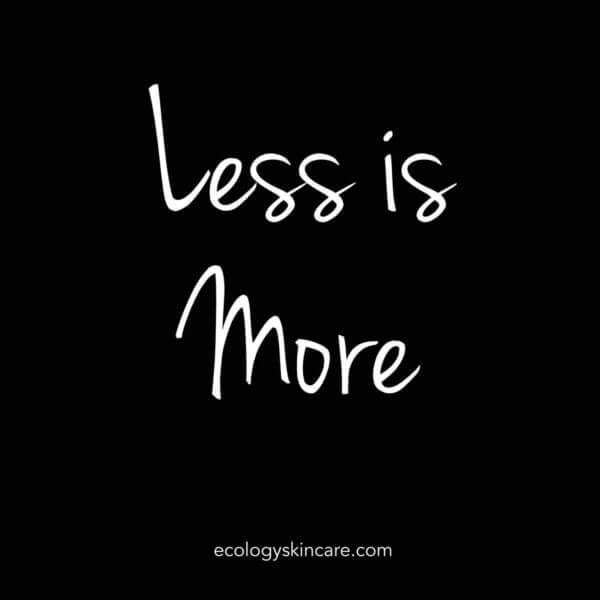
Jo:
Well that’s really interesting because I didn’t know that about emulsifiers.Crystal:
Neither did I, and we’ll have a chat with Asha about that because I find that amazingly interesting.Jo:
Sometimes people will wonder why they’re putting something on their skin and their skin’s getting worse or its, yeah, and that might be one of the underlying reasons.Crystal:
Apart from that, if you have identified that you are sensitive to things like histamines, things like salicylates, you need to pay even more attention to the labels.Jo:
Absolutely, yeah. Keep it even more simple.Crystal:
Exactly, and if you’ve got sensitive skin, moving away from labels, definitely a shorter shower is going to be better, and a warm shower over a hot shower. When you think about it, when we’re washing the dishes we use the hottest water we can because we want to degrease.Jo:
And to kill all the germs, Yeah.Crystal:
Kill the germs and get all the fat off, and that’s why your dishwasher’s got to wash at the temperature they go up to. When we’re putting really hot water on our skin, it’s also going to be stripping the skin of its natural oils. That can take anywhere between 15 minutes to sometimes even up to 24 hours for your body to regenerate those natural skin oils, so then if you’re washing twice a day, you’re screwed.Jo:
Yeah, it’s just constantly stripping it away.Crystal:
Certainly what we put on our skin, it is really important, but it’s not the be all and end all, when it comes to really looking after our skin. If we’re wanting to have a really glowing radiant complexion, it’s more about what’s going on on the inside. Because your skin, in reality, it’s the largest organ in our bodies, and it’s totally supported by everything that’s happening on the inside, by the food we eat, by the other organ systems that support the skin. It just so happens to be the organ that we see every day when we look in the mirror, that we apply beauty standards to and that we apply beauty products to. It’s an organ that needs to be fed well from the inside as well as looked after topically.Jo:
Diet’s one way, to talk a little bit about how we’re feeding our bodies from the inside. What about our thoughts and our minds and stress, because that’s another way that skin can be affected. You said before that every time you felt stressed that your eczema would break out and people have acne when they feel stress so … What happens in the body when we’re stressed that causes all these skin issues?Crystal:
LOTS. Stress, it has an impact on us on a physiological level, on all of our body systems. When we’re stressed, it plays absolute havoc with our gut to start with. A healthy glow begins in the gut when it comes to skin. When we’re stressed, we … We’re often not paying attention when we’re eating. We scoff food down without allowing our body to actually be properly ready to receive the food. When we’re stressed, we just simply don’t produce as much stomach acid as what we need to to digest our food properly. If we’re not digesting food properly, we’re not absorbing all those nutrients that we need to have really healthy skin. If our guts under a load, if we’re stressed and we’re not digesting that food properly, a gut can become easily damaged, especially if we’re eating inflammatory foods.You know that inflammation causes a whole cascade of inflammation throughout the body, and because both the gut and the skin, you know they form an interface between us and the outside world. They need to protect us. They both have a massive role to play in terms of immune function. Between 60-80 percent, I think, of your immune system sits in the gut. But the skin as well, has a massive amount of immune cells, so they’re responsive. If there’s inflammation happening in the body, they respond to that. That leads to inflamed skin, and that’s when you get your eczema, your psoriasis, your itchy, rashy red skin.
Jo:
Yeah, so the body’s on high alert.Crystal:
Body’s on high alert, yeah. There are also, there’s immune cells in the skin, they release histamine as well. [crosstalk 00:34:50] Back to histamine. You and I have spoken about the skin rashes that pop up when we’ve eaten certain foods, or when we’ve been on a flight or when we get overheated, or … I had a rash pop up right up my back, through my stomach, arms, right up my neck after a colonoscopy.Jo:
Right, so that’s your body’s way of telling you that it’s unhappy.Crystal:
Things have been shaking up inside here. [crosstalk 00:35:21]Jo:
It was all trying to sort itself out. It all leads to the gut it seems, isn’t it? [crosstalk 00:35:28]Crystal:
And also, when our cortisol levels are high as well, once again, that’s signalling to those cells in the skin that “We need to be on high alert,” but when our cortisol levels are high it also has an impact on our blood sugar regulation. When our blood sugars are fluctuating, that can lead to really dry skin, when our blood sugars are fluctuating as well, it can lead to excess sugar in the blood stream actually binding to proteins in the skin. And the ones that are more susceptible to damage are the collagen and elastin fibers. Sugar is binding to them, and damaging them, and that can cause the fine lines and wrinkles.That’s one of the reasons why diabetics often look older than their years, because their blood sugar levels are more often than not, higher and
Jo:
Wreaking havoc on …Crystal:
Wreaking havoc, yeah, absolutely.Jo:
And there’s a bit of a link between polycystic ovary syndrome and insulin resistance as well. Often people who have that condition have acne issues and they also have elevated testosterone levels don’t they? I’m not an expert, but from what I’ve read, that’s the case. Anyone who is experiencing those symptoms might want to get that checked out as well in case that’s an underlying issue.Crystal:
Definitely. Yeah, for sure. When the insulin levels are high, it stimulates excess testosterone production, it stimulates oil production in the skin, and scalp as well, so you wind up with greasy hair as well as acne and it’s definitely something to investigate if you think that might be an issue.Apart from that, you mentioned our thoughts, our emotions, and that comes back to … There’s a huge link between the brain and the nervous system and the skin. Because when you think about it, once again, the skin being the barrier between us and the outside world there’s a lot of sensory information that travels from the skin to the brain about things that are hot, things that are cold, things that are sharp, things that are painful. The sensory experience when we’re touching things and interacting with our environment, all information goes back to the brain. There’s basically a highway of information that’s really strong.
The skin not only is the largest organ in the body, but it’s also the highest level of interrvation. That becomes a two-way street, so it means that the skin is also really sensitive to the signals from the brain that are signalling our emotional state and our thoughts and our feelings. If we’re embarrassed, we blush.
Jo:
Yeah, that’s a really good example. It happens instantly.Crystal:
If we’re scared or something’s frightened us, then people say, “My gosh, you’re as white as a sheet!”Jo:
Or, goose bumps, and things like that, yeah.Crystal:
Yeah, so our skin’s really in tune with what’s going on, which for me, when a naturopath said to me, “I holiday’s really agree with you, Crystal. Do you think stress might be causing a lot of these skin issues and underlying problems?” You kind of go, “Great! We’ve pinned it down. It’s all the stress.”For a couple of weeks, I’m like, “Great, I know what’s going on now. It’s stress.” And then you kind of realize, this stress thing, it’s pretty hard to implement the practices that might allow you to change negative thoughts or negative beliefs or perceive your world in a different way, so it doesn’t wind you up so much emotionally and make you so anxious or make you so frustrated. Yeah, it, I find it so much harder to implement those kinds of practices than what I do to change my diet, or take a supplement, or go to bed early. I don’t know about you.
Jo:
Absolutely. I’ve had the same experience, going out on holiday, feeling great and, “Oh this is perfect,” and then getting back into the daily routine and the grind and go … It doesn’t take long for the body to start trying to communicate with us again that things aren’t right. It’s definitely a long journey with the stress management.I’ve spoken to you about doing mindfulness courses and trying to incorporate that into my daily life. Just trying to be more aware of my thoughts and how I’m responding to stress, because the stress isn’t going to go away. Whatever is happening in our environment, the situation, we can’t change that. It’s about how we’re going to respond to it, which sometimes can be tricky because it would be almost instant, for the body to kick into gear with a fight or flight reaction. It takes a lot of work, but it’s so worth it, because obviously the return on that investment is the skin’s clearer, the body’s more balanced. It’s definitely not that easy and some days are better than others. I think some wins on some days, but yeah. It’s worth looking at and paying attention to.
Crystal:
Exactly, because as you say, life goes on. That stress isn’t going to go away. If we can change our relationship to the things that are stressing us out. If we can give it a different meaning, or “reframe” it, I think is one of the terms you’ve used recently, which I love. “Let’s reframe this.”Jo:
Yes, let’s look at it in a different way. It’s all about perspective.Crystal:
Yeah, absolutely. And that’s why my meditation is incredibly helpful for myself because it allows me to be more observant of the reactions that I’m having, so I can step back and then choose how I’m going to respond, or choose how I’m going to react in a certain situation.Jo:
Crystal, have you also tried visualization around your skin, like specifically, meditating around healing your skin?Crystal:
I actually have, and I’ve found that to be fantastic. The hardest thing with that kind of thing is to remember to do it. To keep it up. But yeah, I fully believe that the body has an amazing ability to heal itself and to heal the skin. You can prompt it to do the things that it needs to do with really good visualization. Some of the visualizations I’ve used around my skin kicking out the bad microbes that are contributing to the dermatitis, and having the skins natural barrier function come in and fill the gaps between my skin cells to keep all the irritants out and to keep all the moisture in. I use the brick and mortar visualization in my head, so that all those oils are coming in between the skin cells and really sort of soaking in there and forming a really strong barrier to keep …Jo:
Doing a bit of a repair.Crystal:
And other visualizations I use, because I know they will help with the skin, is around the gut. Having my gut gatekeepers, the soldiers that are standing at the gate of every single skin cell, letting in the little single components, the food that’s been broken down properly into one little round molecule, they’re allowed through. All the other bacteria, all the larger chunks are kept out.Jo:
That’s pretty detailed.Crystal:
Yeah, but it works really well. If you’re just prompting your body around these things, it will naturally rise to the occasion.Jo:
You’re basically telling your body what you want it to do.Crystal:
Yeah, exactly. I have another great one with inflammation in general where, and the immune system where I’m just sort of saying, “Hey, this part of the body is actually the safe part. We don’t need to be attacking this. Calm down.” As part of the process I’ll relax first, going through the visualization process over and over and over for a set period of time. Then when I’m finished, I do a little happy dance and that seals the deal in terms of having my body recognize that this is a great practice to do.Jo:
Happy dance.Crystal:
Happy dance to finish. I think it does, it forms a really important part of that holistic approach to skin care. Really nourishing the skin topically with good quality skin care that will support your skin’s natural barrier, function and support your skin’s natural functionality, and nourishing the body with anti-inflammatory whole foods that are going to support the gut, they’re going to support healthy hormonal responses. Also, nourishing our hearts and minds with those practices that reduce stress and tension.Jo:
There’s no one thing. There’s a combination of things that we all need to do, as we know, with everything. It’s a complicated issue.Crystal:
Absolutely, in fact, the payoff is that although you might do these things because you’re wanting to fix problem skin, or you’re wanting to have that glowing radiant complexion and look younger than your years, and look the way you feel. The bonus of all that stuff is that you’re going to actually be so much healthier from a general perspective and you’re going to be so much happier from a general perspective as well. That’s where it’s all at.Jo:
Yeah, and one of the things we haven’t mentioned yet but it’s tied in with the stress is sleep. I know if I haven’t slept properly, I’ve got the bags under my eyes and maybe more susceptible to breaking out. Skin’s not happy. A good night’s sleep does wonders for a glowing complexion, doesn’t it?Crystal:
It really does. People notice immediately. They’ll start saying, “You’re looking very tired, is anything wrong?”Jo:
Not a very nice thing to hear, “Thanks”Crystal:
One of my favorite things to do, and I know it’s a favorite of yours as well, Jo, to help wind me down before bed is to put my feet in an Epsom salts bath.Jo:
Yeah, it’s great.Crystal:
It just helps to … It helps to relax you generally. It helps to relax bowel muscles, so if you have any constipation or anything like that which can really contribute to skin issues if you’re reabsorbing hormones and chemicals back into the body, not detoxifying it properly and they get pushed out through the skin. Epsom salts, being a magnesium sulfate can really help with that liver detoxification process as well, and it feels good. So that’s a primal hit for me, an Epsom salts foot bath.Jo:
Yes double, two primal hitsCrystal:
All righty, well I think we’ve probably talked everybody’s ears off for long enough.Jo:
Yes, but we did have primal hit [inaudible 00:46:11]Crystal:
Yeah, our primal hit or primal shift for this episode is sunscreen. Sunscreen’s a bit of a controversial one especially in the primal world, where we recognize that sun is a good thing. The sun has been around for the two million years that we have, and sunscreen’s been around for probably the last 100 years. Our body has adapted to sun exposure over time. We need to kind of walk that delicate line between too much sun and not enough sun. What are your thoughts, Jo?Jo:
Well as someone with really really fair skin, we burned very quickly. I have to use sunscreen after a very short period of time so I can go out and maybe expose my skin, depending on the UV-levelsCrystal:
Yeah, the time of the year and all that kind of thing.Jo:
Yeah, so it may be a safe amount of time on a typically sunny day, may be for about 10-15 minutes, so I can get out without sunscreen. And then, if I’m going to be outside for prolonged periods, and I’m wearing a singlet or something, I have to put on sun block. Also, keeping in mind, too, that because of global warming and the ozone layer depletion, we are getting exposed to higher levels, especially in this part of the world in Australia and New Zealand where we’re sitting right under that ozone hole. I’ve certainly done traveling over other parts of the world where I haven’t had to worry about it as much.I have to do that. I’m certainly loathe to put chemically based, sunscreens on my skin, it’s something that I’ve done for years before I clued on to all this. I definitely go for the natural based products which is normally zinc based.
Crystal:
The ones that are either zinc oxide or titanium dioxide.Jo:
Yeah, that’s right, which work really well. They don’t expose my skin to chemicals but they tend to block up my pores, because they’re pretty much like putting a coating over the skin. I guess I have to flip a coin like, “What am I going to put up with?” Obviously it’s a no-brainer I just put the naturally based sunscreens on my skin and just put up with maybe some grumpy skin for a while, but that’s fine.I think that within reason, people need to work out what’s right for them. If they are particularly sensitive to the sun. If they can put up with longer periods of exposure, that’s great. We get lots of vitamin D from the sun. We also get lots of help with our serotonin levels as well from the sun. I certainly don’t want to shy away from it, but it just has to be in balance. I think everyone should take that approach as well. And if they’re taking medications or putting things on their skin, that does make them more photo-sensitive, they need to keep that in mind.
Crystal:
Especially with acne and antibioticsJo:
Absolutely, but I say, nothing wrong with getting out and getting a bit of sunshine in moderation.Crystal:
Primal hit?Jo:
Primal hit. My primal hit. What about you?Crystal:
Yeah, I totally agree. I know for myself, I always feel so much better after sitting in the sun for a little while. You always feel fantastic. I have been a sunbather in years gone by to the point where … You wear certain things and move certain layers around so you don’t get lines, tan lines and all that kind of thing. Because I do have skin that does naturally tan. I’m a lot sun safer now, I have to say, even though I recognize the importance of vitamin D, getting your vitamin D. I will seek out shade more often, wear hats to shield my face. I do wear sunscreen as well when I feel I need to. But my skin is actually pretty resilient to being burned. It will tan rather than burn.Jo:
You’ve got a lovely brown as opposed to me, I just go bright redCrystal:
One of the things I would say with vitamin D, we’ve got a vitamin D deficiency epidemic in the world. It’s so important for our immune health. There’s studies that show, interestingly enough, that people that spend more time indoors that have a vitamin D deficiency that are more likely to get cancers, even skin cancers compared with people that are working outside. That vitamin D, it will help to reduce damage to the DNA as well and has such an important immune function. In terms of which parts of your body are best to expose to get that higher level of vitamin D production, it’s actually your bum, and your tummy.Jo:
Yes, get your bums and tums out.Crystal:
Bums and tums out. Get them out. And that’s because there’s a higher level of fat in those areas of the body and you need to have a fat base to actually create vitamin D in the body, a cholesterol base. That’s why those fatty areas are best to get out in the sun.Sun does cause aging damage. It does cause oxidative damage. If you have been out in the sun, if you have been even sunburned, you need to get more antioxidants into your body. Think your high anti-oxidant foods, your leafy greens, your berries, foods that are high in vitamin C to try and offset to some degree, that oxidative damage that you’re doing to your skin.
Jo:
Eat your veggies, people. Eat your veggies and go out in the sun. Eat your veggies in the sun.Crystal:
Meditate in the sun; have a green smoothie afterwards.Jo:
That’s right. Your skin will glow.Crystal:
It will. It will. Thank you so much everyone, for having a listen today. You can find me at ecologyskincare.com. You can find all the show notes and photos and everything we’ll post up for the Primal Shift at theprimalshift.com.au.Jo:
And we’re on Instagram as well, so come on and say hi to the Primal Shift.Crystal:
Yeah, definitely. And subscribe on I-Tunes, so that way you’ll have new episodes popping up in your feed as soon as we post them up.Jo:
Yeah, we’ve got some exciting episodes coming up.Crystal:
We do. We do.Jo:
All right. Thanks guys. Thanks for listening.Crystal:
Thanks for listening. See ya.Jo:
Bye.Curious about our Ecology Creams?
Take the Ecology Quiz Now to find out which one will suit you!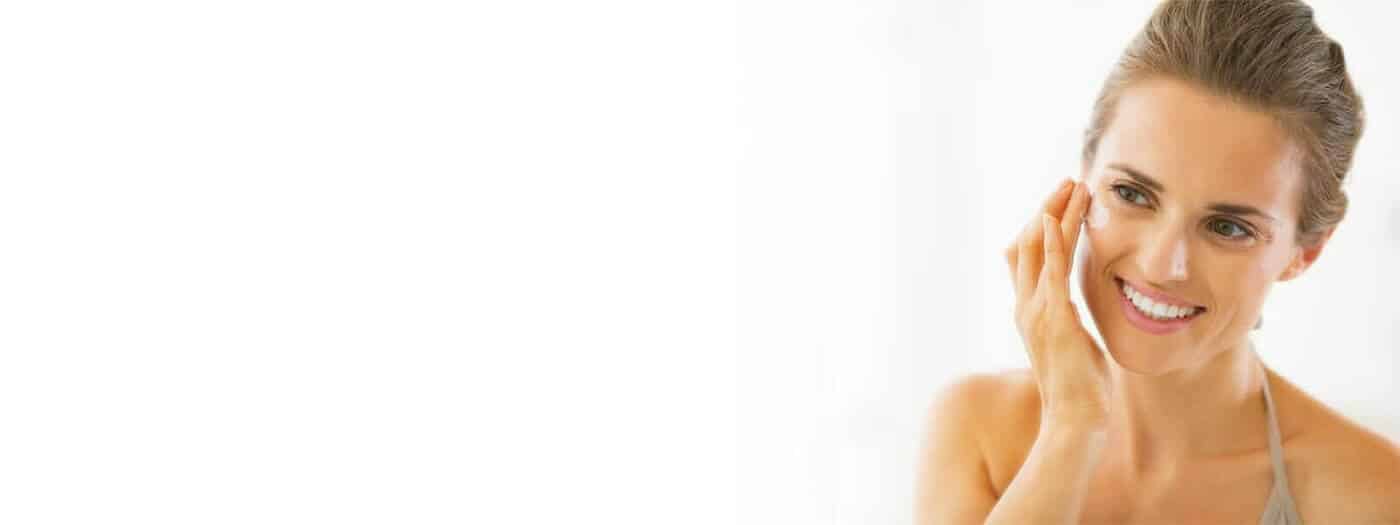
WHICH ECOLOGY MOISTURISER IS RIGHT FOR YOU?
TAKE THE QUIZ TO FIND OUTThe post How to Make Natural Skincare Simple appeared first on Ecology Skincare.
8 September 2015, 9:04 am - 13 minutesMBB#4: How Self Love Can Help Clear Acne with Tracy Raftl
This is Part 2 of our chat with Tracy Raftl from the Love Vitamin Blog on How to Clear Acne Naturally from the inside out.
If you missed Part 1, check it out here: MBB#1: How to Clear Acne Naturally with Tracy Raftl
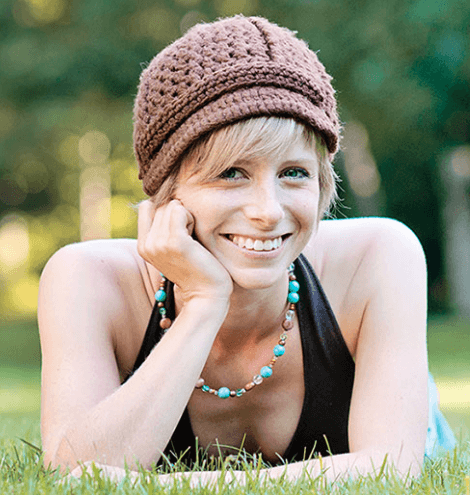 Tracy Raftl from The Love Vitamin
Tracy Raftl from The Love Vitamin
In this episode of the Mind Body Beauty Show we’re digging a little further into the emotional side of dealing with acne.
We chat about:
- Dealing with the inner critic and learning to love and accept how you are right now and where you are on the journey
- Managing expectations and constantly shifting your attention, looking for things that will make you happy
- What self-acceptance is really all about
- Can you accept yourself with acne?
- Wanting everything to be perfect before you can love yourself, move on and live your life
- Putting things off until you heal your skin
- Where do you start with self-acceptance?
- Becoming more aware of your thoughts, especially when you’re talking down to yourself
- Watching your thoughts, realising they are not necessarily true
- Choosing to replace anxious, picky thoughts with something kind
- Treating yourself the way you would a friend who was in your situation
- Resolving fears around acne returning once you have clear skin
- Stepping away from the mirror and stepping away from the thoughts to deal with fear and anxiety
- Fear is a choice and stopping it from spiralling out of control
- The real work in clearing acne is in the emotional healing
Links:
Please share your experience in the comments below and tell us what’s worked for you to help clear your acne!
Wishing you silky smooth skin,

The post MBB#4: How Self Love Can Help Clear Acne with Tracy Raftl appeared first on Ecology Skincare.
2 September 2015, 8:55 am - 24 minutes 5 secondsMBB#3: Dealing with Eczema and Adult Acne with Jo Fitton from The Primal Shift
On this episode of the Mind Body Beauty Show, I talk about dealing with eczema and adult acne with Jo Fitton from The Primal Shift Podcast.
Jo is a good friend and my co-host on the popular Primal Shift Podcast. She is a fellow kiwi, a lover of good food and a health and wellness nerd.
Like myself, Jo has a history of dealing with eczema and adult acne and she shares her story on what the underlying causes were for her and how she managed these skin issues. We take a look at what’s worked for her and what hasn’t. The Primal Shift Team: Jo Fitton, Andrew Fieldhouse & Crystal Fieldhouse
The Primal Shift Team: Jo Fitton, Andrew Fieldhouse & Crystal Fieldhouse
We chat about:
- Jo shares her experiences with childhood eczema
- How no-one made the connection between processed food and her eczema outbreaks (it wasn’t well known at the time)
- Managing eczema topically with calamine lotion and hydrocortisone cream
- Escaping teenage acne but getting painful cystic adult acne around her chin and jawline in her early 20’s
- How acne affects self esteem and confidence
- Dealing with sensitive skin and acne and the things that probably made Jo’s skin issues worse: sugar, alcohol, stress and hormonal disruption
- Taking antibiotics and the birth control pill to deal with adult acne and the effect on Jo’s gut health
- Sensitivity to FODMAP containing foods and the effects it can have on people who are sensitive
- The hormonal fallout from taking the birth control pill, chronic cardio and adrenal fatigue
- Sensitivity to histamine containing foods like smoked foods, alcohol and fermented foods and how these foods can affect skin issues
- Jo’s experiences with increased skin sensitivity, rashes and puffiness when eating high histamine foods
- What Jo has done to manage her skin issues – keeping things simple with topical skincare
- Treating her skin as “sensitive” using fragrance free, low chemical products that don’t strip skin oils and a konjac sponge, moisturising with gentle products including Ecology Cream
- Oatmeal and honey masks
- Being aware of the foods she’s eating and the effect they have on her body, doing or trying one thing at a time
- Managing stress with mindfulness, deep breathing and yoga
- Working on healing her gut with probiotics and specific supplementation
- Prioritising sleep, shutting off devices and winding down after 8pm
 Blue Blocker Glasses
Blue Blocker Glasses
Links:
Transcript:
Please share your experience in the comments below and tell us what’s worked for you to help clear your eczema or adult acne!
Wishing you silky smooth skin,

Have sensitive or problem skin? Make sure you’re not making these mistakes…
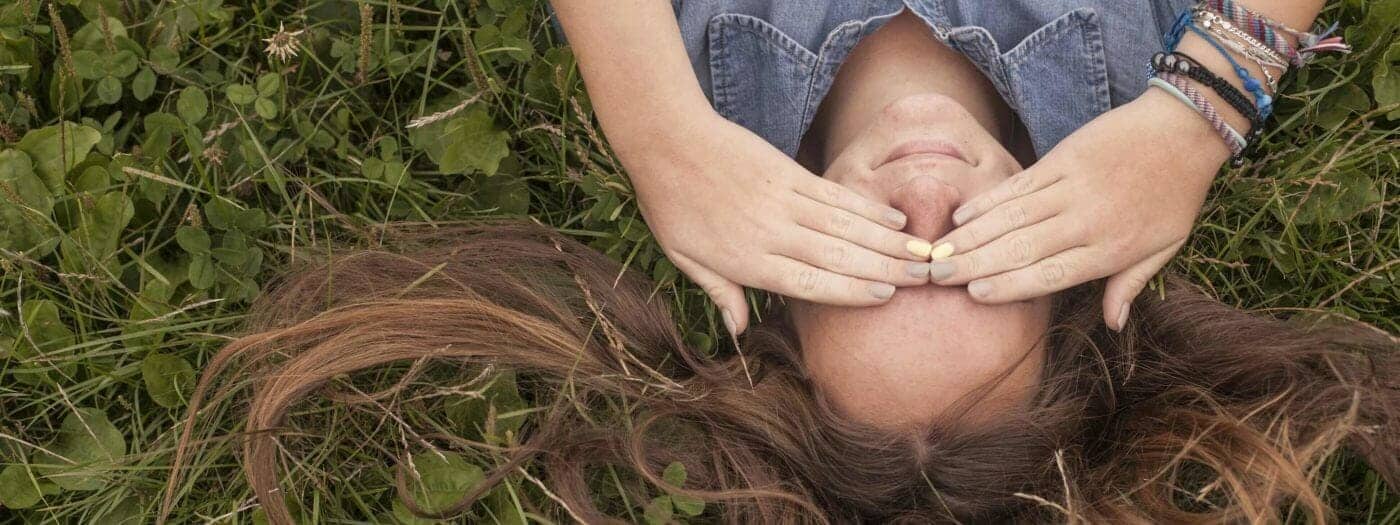
ARE YOU MAKING THESE 3 SKINCARE MISTAKES?
TAKE THE QUIZ TO FIND OUTThe post MBB#3: Dealing with Eczema and Adult Acne with Jo Fitton from The Primal Shift appeared first on Ecology Skincare.
19 August 2015, 10:12 am - More Episodes? Get the App
Your feedback is valuable to us. Should you encounter any bugs, glitches, lack of functionality or other problems, please email us on [email protected] or join Moon.FM Telegram Group where you can talk directly to the dev team who are happy to answer any queries.
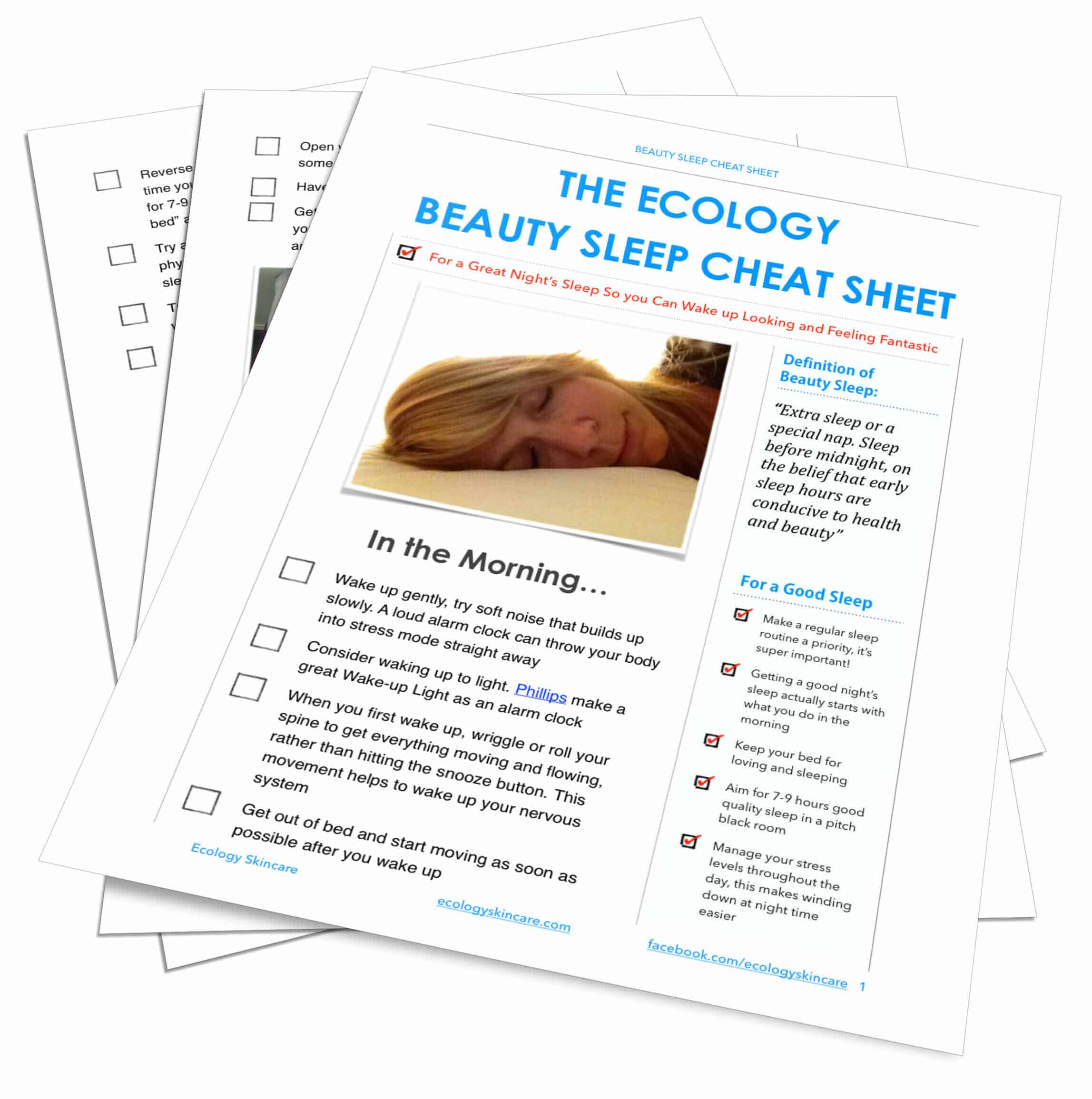
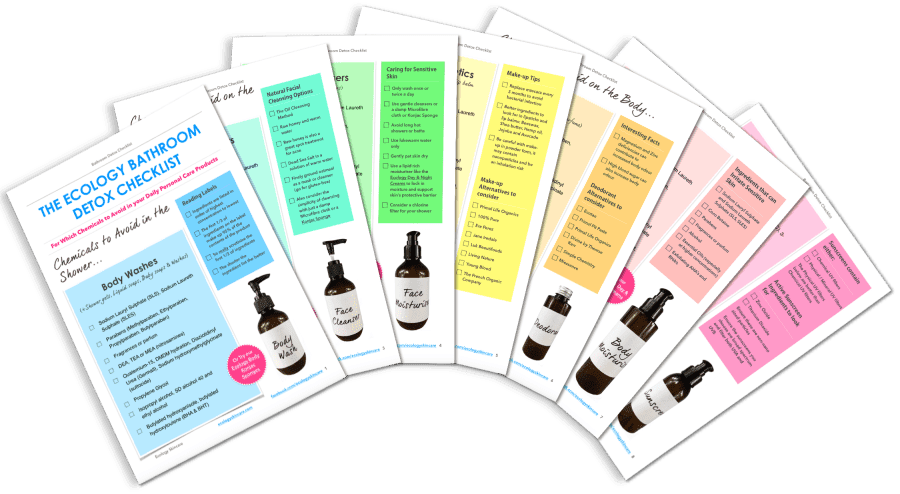
 Ask The Beauty Advisor's Podcast
Ask The Beauty Advisor's Podcast
 Ultimate Skincare & Beaute Report
Ultimate Skincare & Beaute Report
 Clear Skin Forever Podcast
Clear Skin Forever Podcast
 The Beauty Biz™ Show
The Beauty Biz™ Show
 SKINCARE Talk Radio
SKINCARE Talk Radio